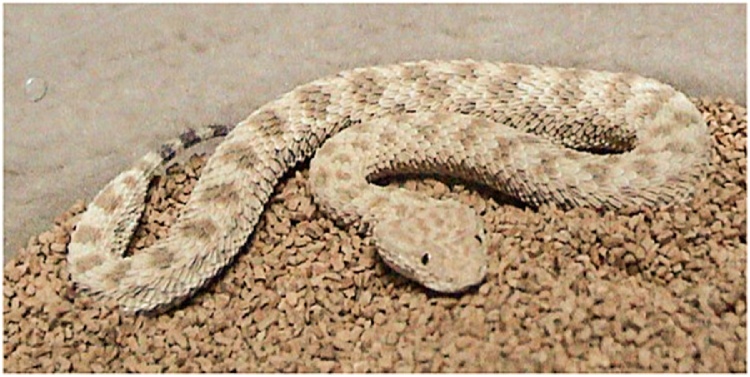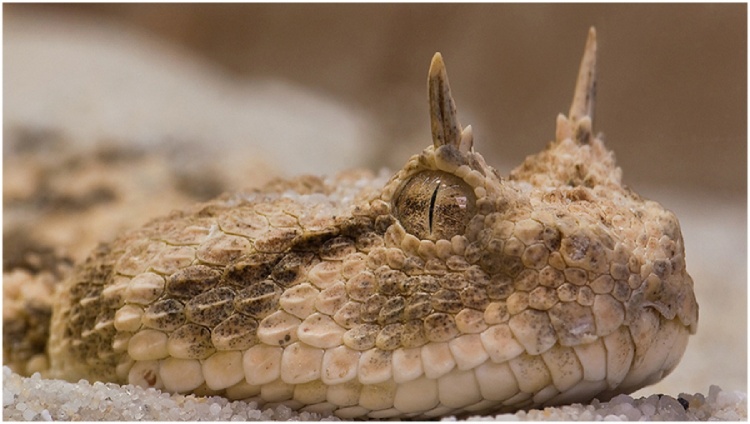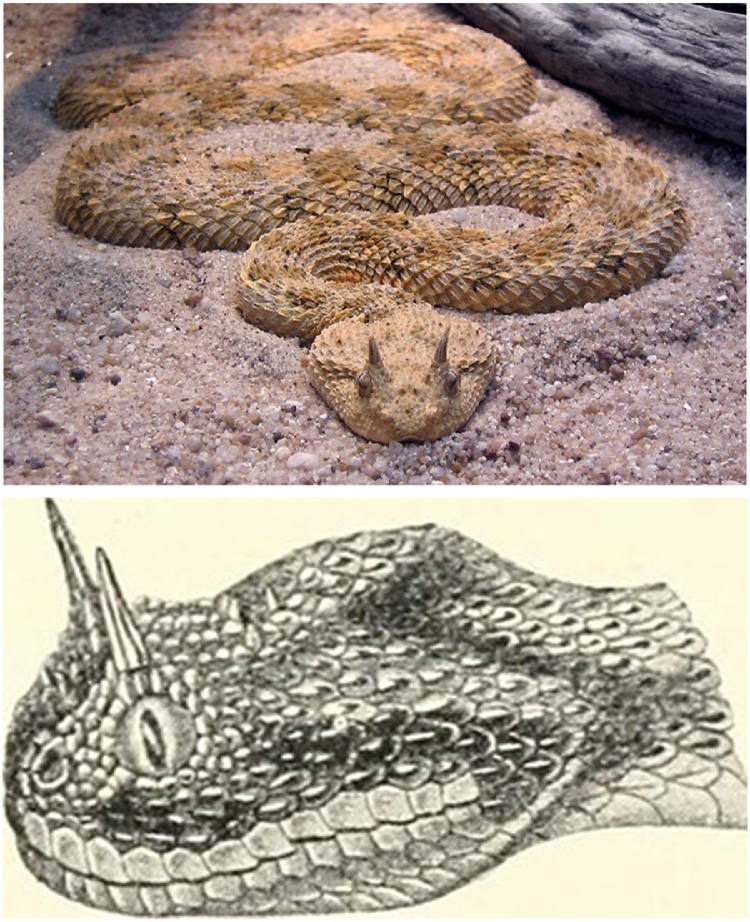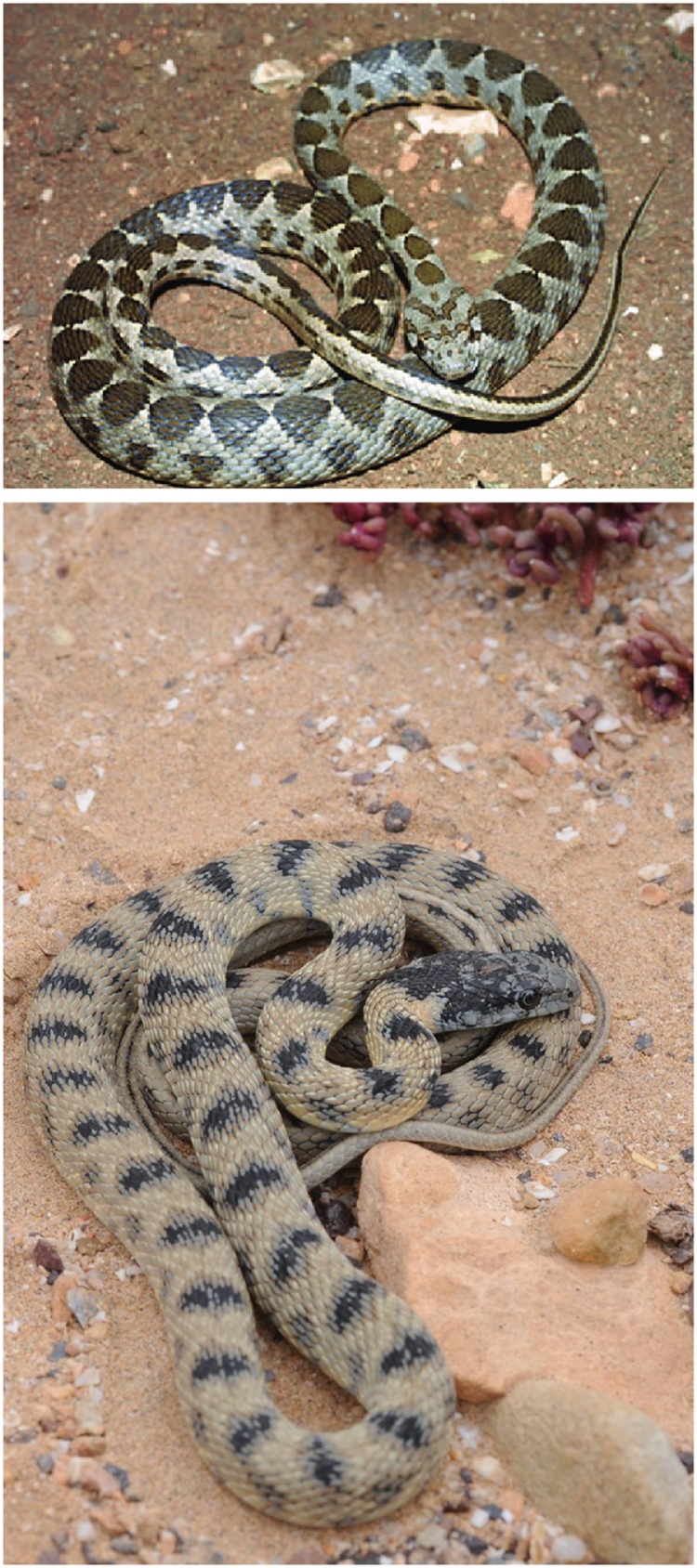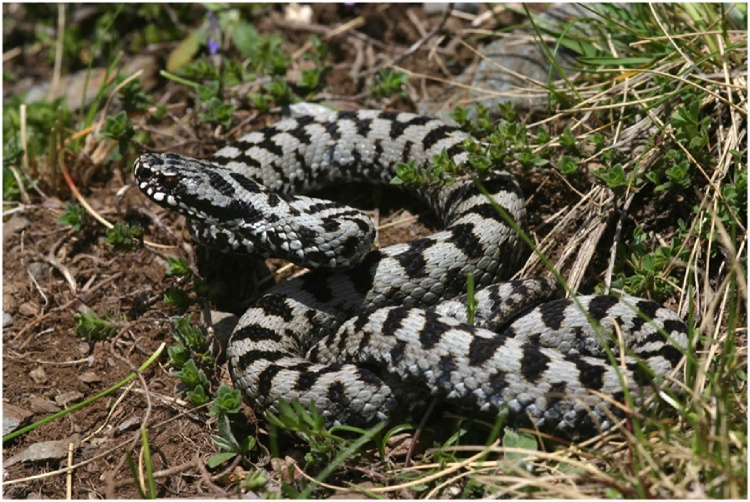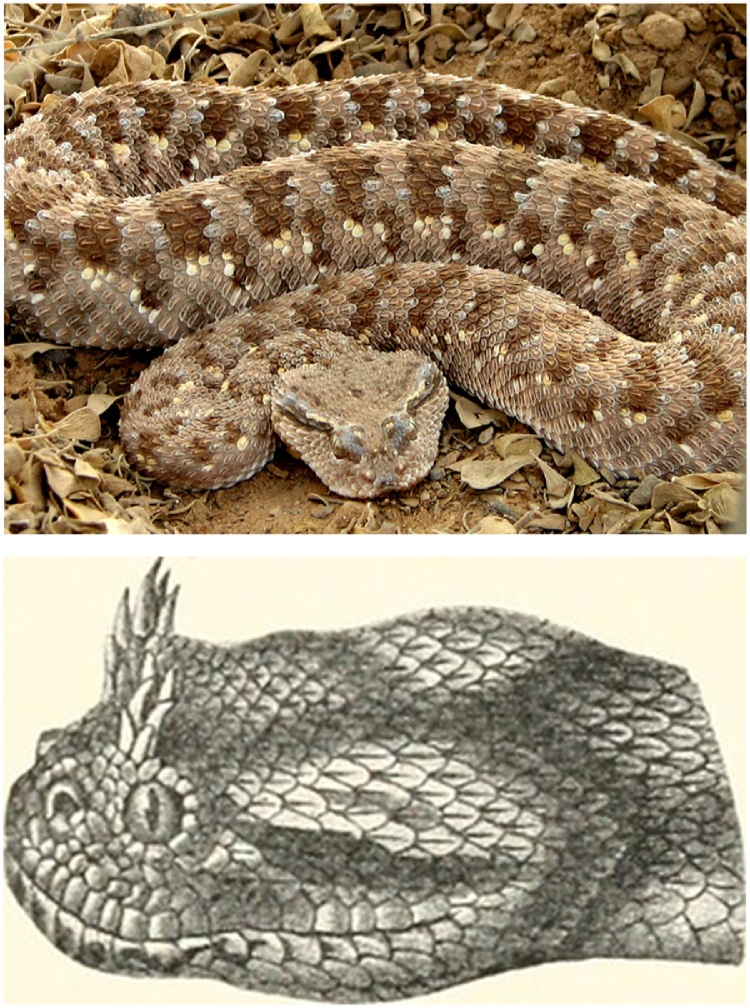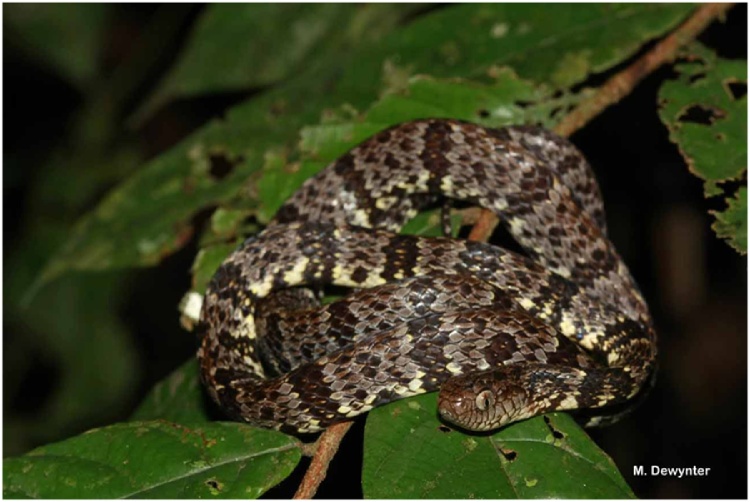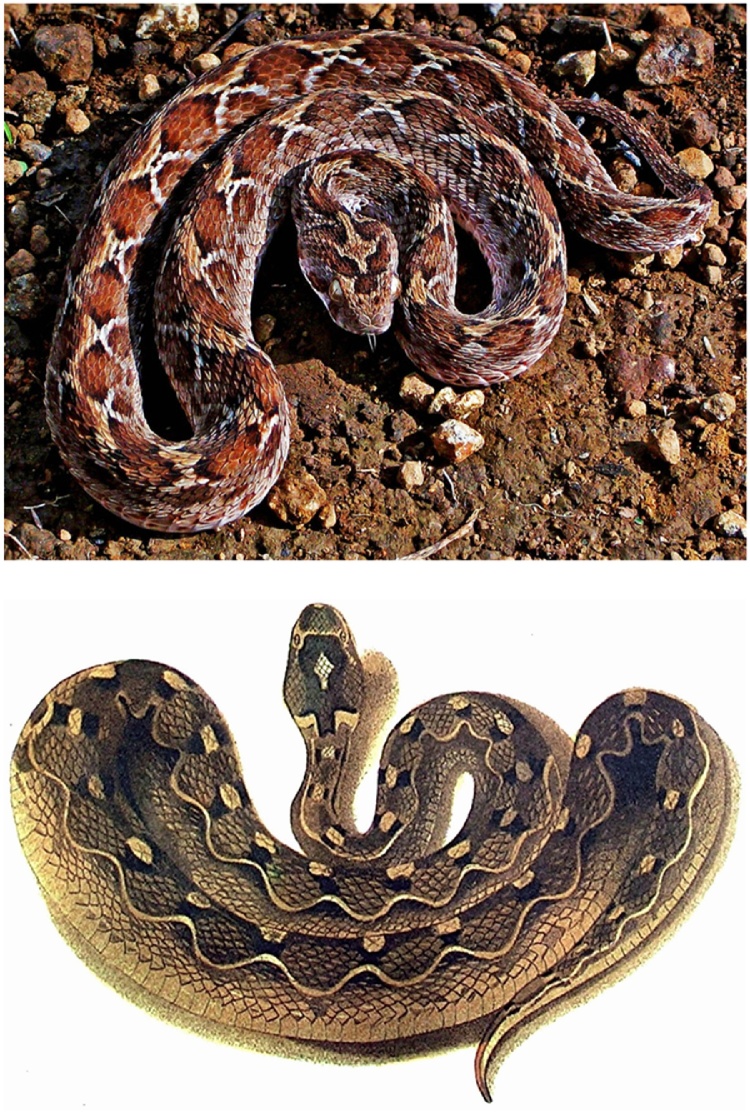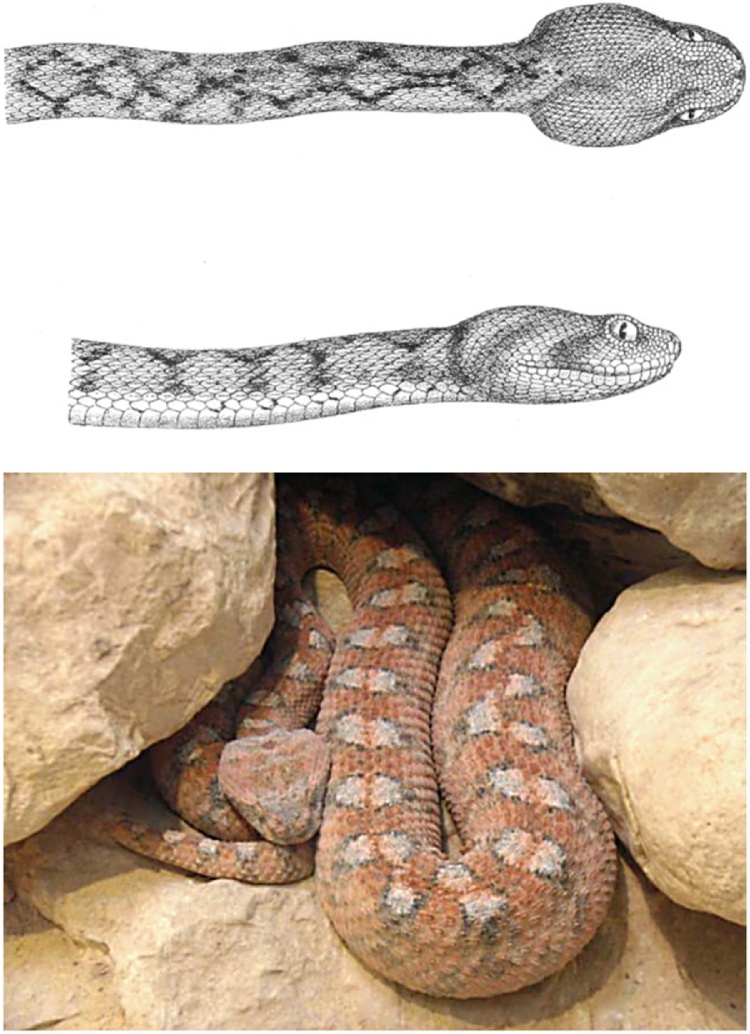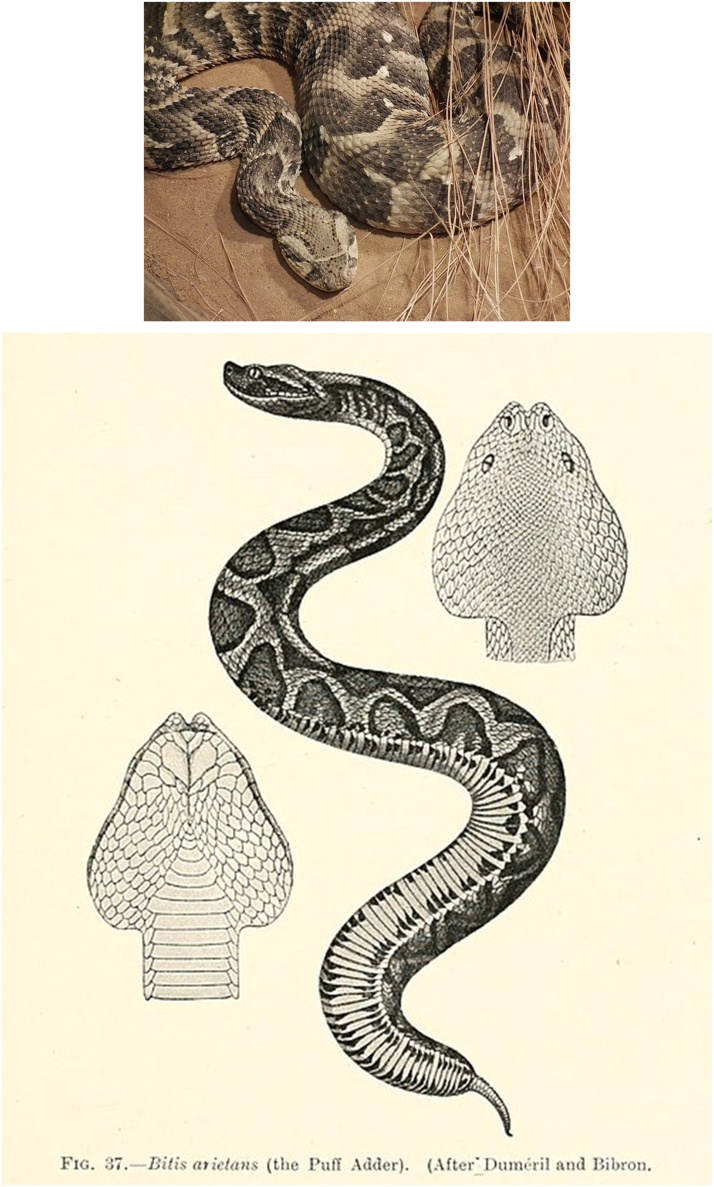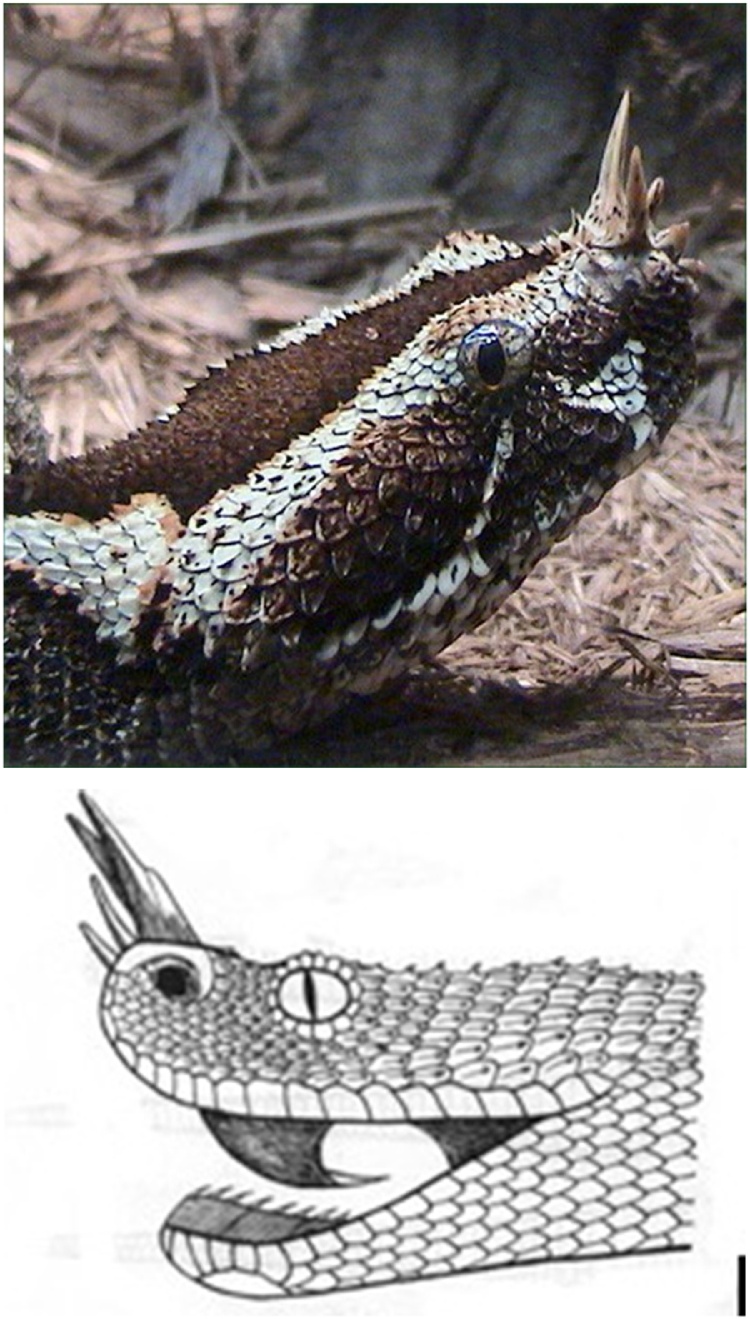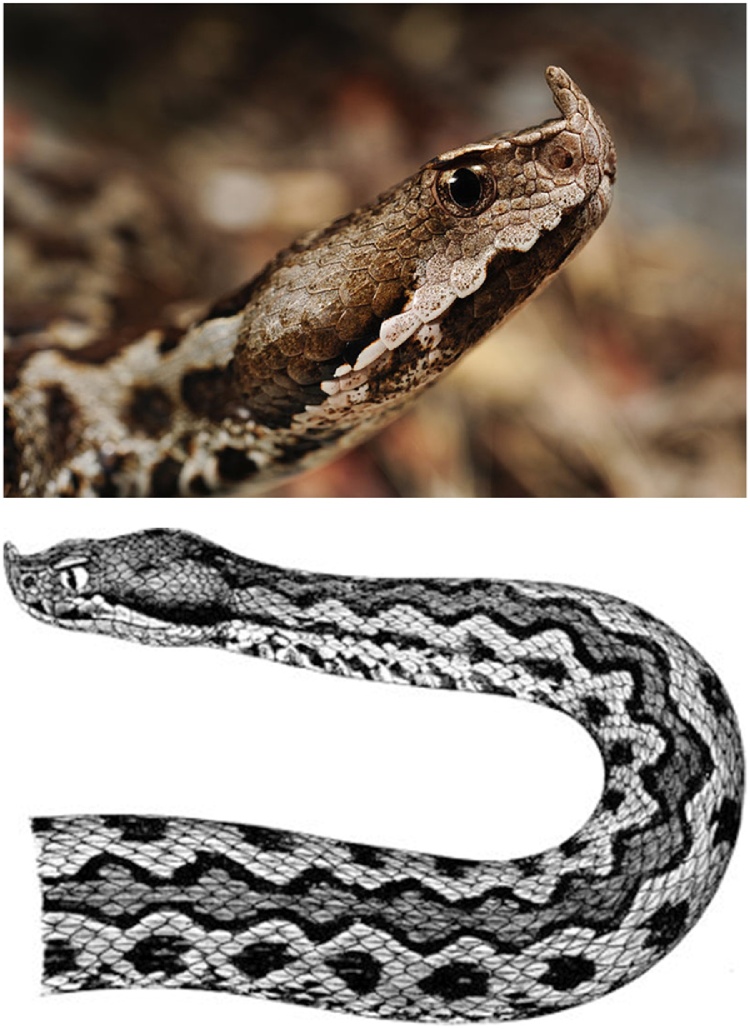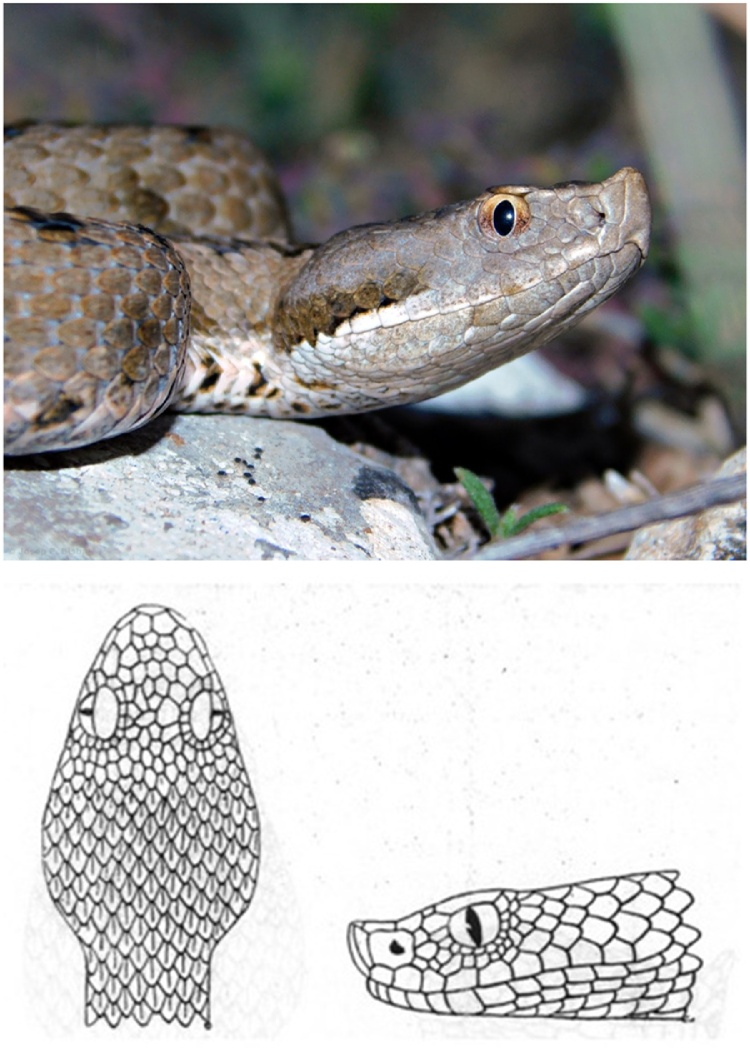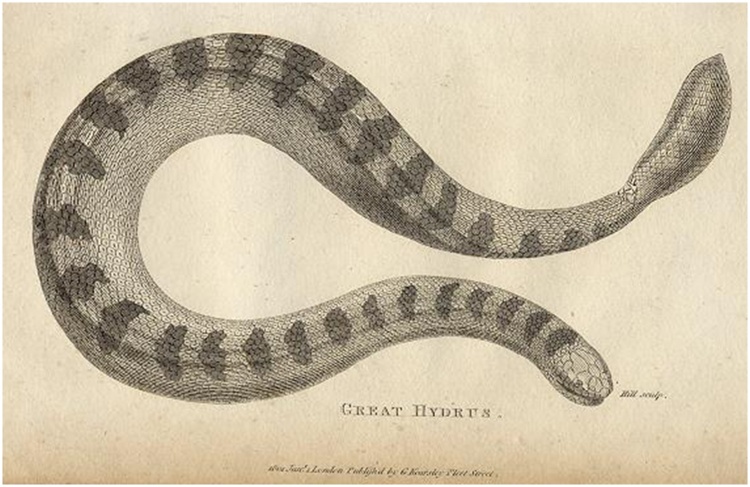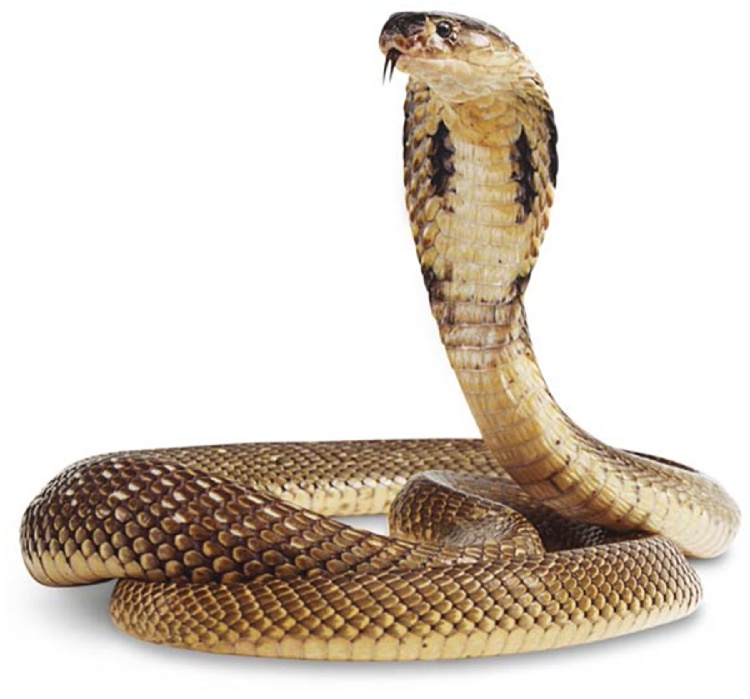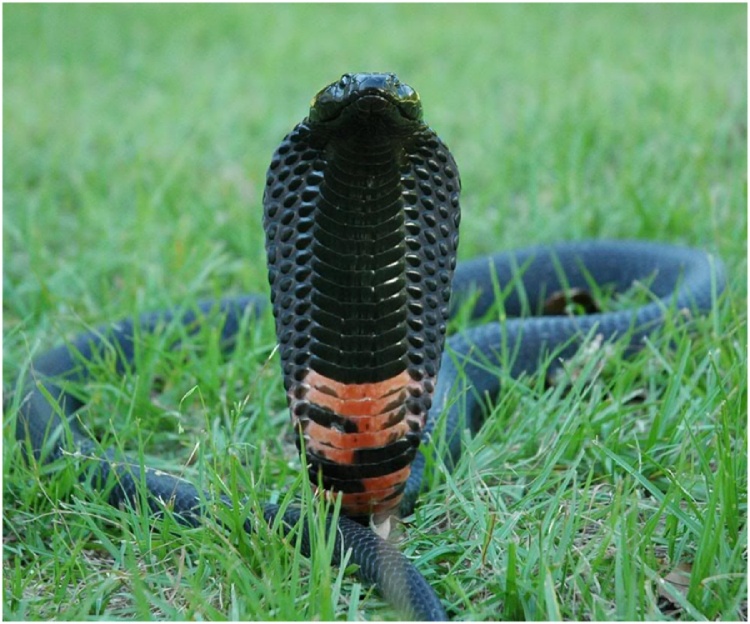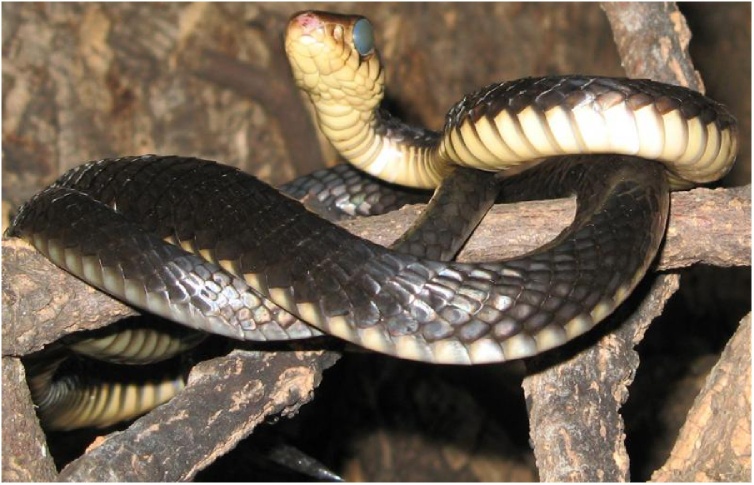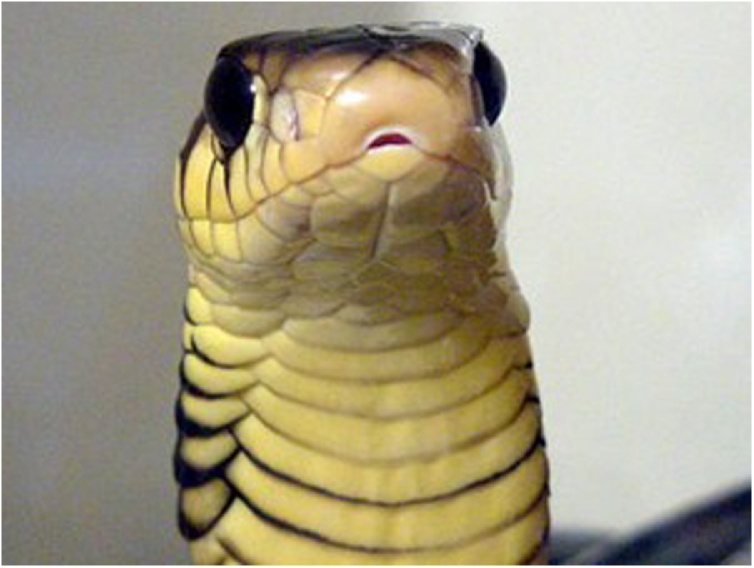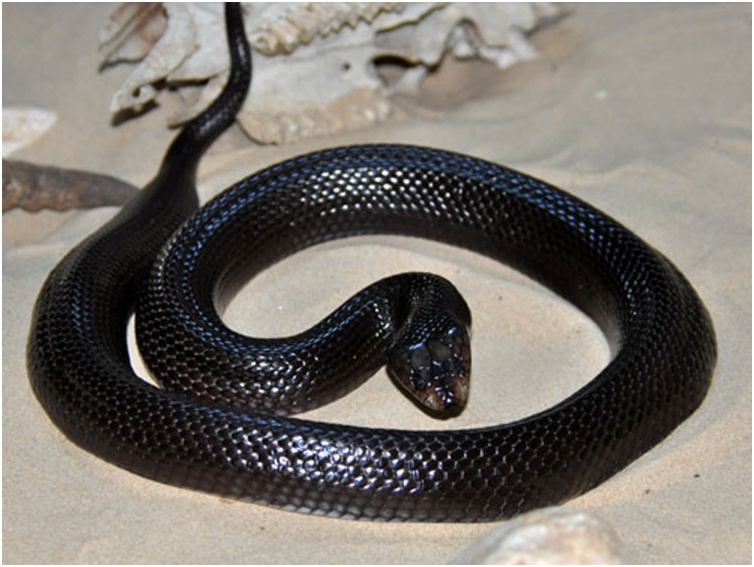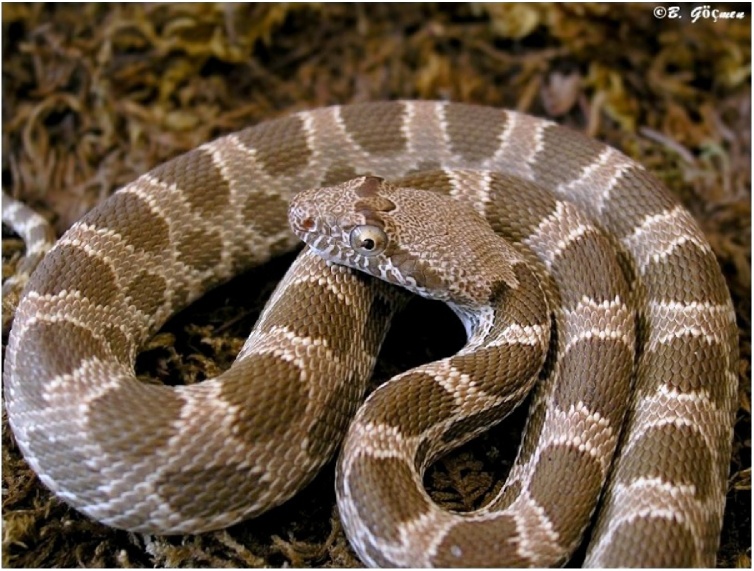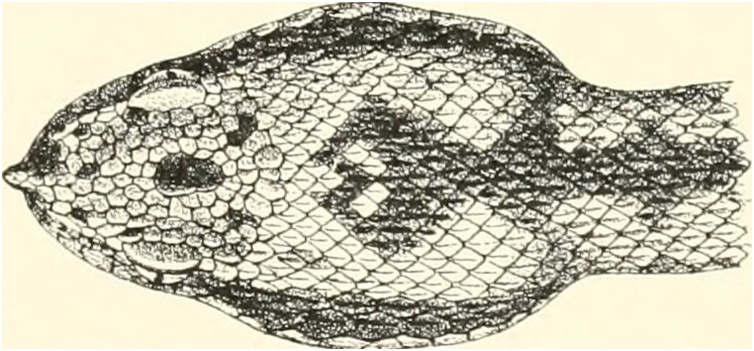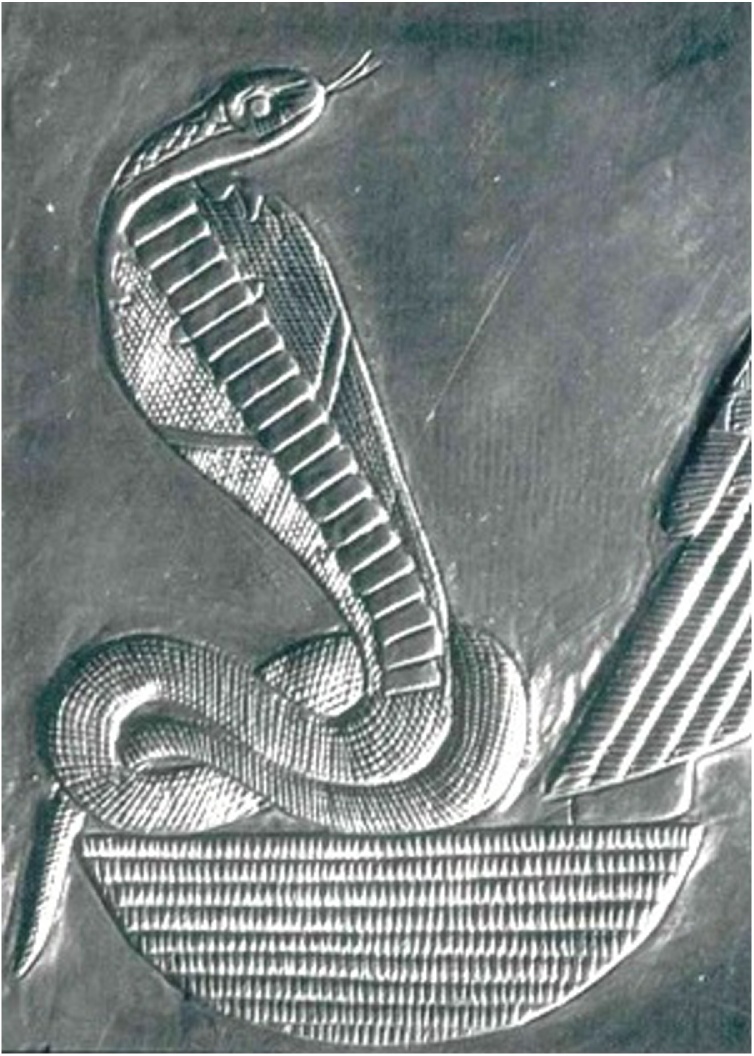Highlights
-
•
 Cleopatra a paradigmatic case of femenine power, personal charm and cold courage.
Cleopatra a paradigmatic case of femenine power, personal charm and cold courage. -
•
 Ptolemaic Dynasty, especially the last queen, was interested in drugs and poisons.
Ptolemaic Dynasty, especially the last queen, was interested in drugs and poisons. -
•
 The snake theory prevailed about her death, however, that is quite problematic.
The snake theory prevailed about her death, however, that is quite problematic.
Keywords: Ptolemies, Toxicology, Snakes, Cleopatra, Self-murder
Abstract
The decadent Lagids’dynasty was especially interested in drugs and poisons meanwhile Alexandria became a prestigious center of learning and the first medical center of the ancient world. Scholars dedicated to toxicology would research in the famous Museion and the Hellenistic rulers of Alexandria and other kingdoms had court physicians specialized in pharmacology and venoms. As the last member of Ptolemaic Dynasty, Cleopatra VII inherited the throne and also the great inclination of Ptolemies towards medicine and science. In this city toxicological education seems to have had its most systematic development, and for Galen [1] “human and prompt executions’ were made in Alexandria with the intervention of cobras”.
Attracted by the knowledge of venoms and poison, Cleopatra began to test them on condemned prisoners to see the different reactions produced in the body and found toxic limits. When she decided to commit suicide, the use of poison would make sense given the possibility to choose the best one to get a quick and relatively pain free death. Knowing that oral poisons would cause disturbances as painful spasms, nauseas, abdominal cramps and slow end, she presumably compared the major effects of venemous snakebites caused by the various species living in Egypt, specially three families: vipers, hydrophids and elapids.
Cleopatra probably realized that viper bites generally produce violent local pain with inflammation, oedema, skin discoloration, pustules, vomiting and blood loss. With the cobra venom, hemotoxic or neurotoxic, instead, death could happen within half an hour, by respiratory failure and general paralysis without leaving any trace on the flesh, though. It has been said that Cleopatra used the cobra to kill herself because it would also make sense in terms of Egyptian mythology, being associated with the sacred uraeus worn by the pharaohs. However, there are several problems with this theory and some scholars recently argue it’s more likely she would drank a cocktail of drugs or applied a toxic ointment, as Strabo suggested.
Studying the different poisons and the snakes that she could have selected and the symptoms and consequences that they could produce in her body, we’ll try to delve into her possible lucubrations and reflexions, weighing the difficulties in each case. Undoubtedly, the mysterious end of Cleopatra remains unsolved, offering a constant source of legends and theories. Keeping this in mind we will try to present the pros and cons of each of her possible decisions.
1. Introduction
In Ptolemaic Egypt, especially in the last period, political crises, general uprisings, dynastic disputes, violent deaths were commonplace. The popular violence against the injustices of a decadent dynasty resurged and the foreign kings would struggle to maintain their power. They had soon forgotten their first achievements [2]: the creation of Alexandria as a vibrant cosmopolitan city and a major center of Greek culture [3], the foundation of the renowned Museion [4] with its famous scholarship holders [5] and the Royal Library [6] as the main repository of books and rolls, the extraordinary scientific and literary development and finally the new conquests that expanded their power, including Cyrenaica, Phoenicia, Coele Syria (Superior Syria), Cyprus, the Cyclades.
The experimental progress and scientific ideas in medicine as well as anatomical studies represented the higher point in Antiquity with Herophilus and Erasistratus who denied, however, the use of different substances, including those venemous, as remedies. Apollodorus of Tarentum, a remarkable scholar, led the subsequent studies of toxicology. However Ptolemy VIII Evergetes II, one of the most brutal politicians called Kakergētēs (Malefactor) [7], drove out of Alexandria the Greek intellectuals, contributing to the dispersion of Herophilean School and the decline of the Museion [8].
The early life of Cleopatra VII was spent in this particular context until, as the last queen of Egypt, she eventually decided to drastically end the decadent dynasty and to choose for herself an honorable although enigmatic death.
2. Particular context of her life: the Lagid Dynasty
As a family, Ptolemies were cruel and quarrelsome and the women were as ruthless as them. Ptolemy IV Philopator’s reign (221−204 BC), royal Grec name that means ‘Loving his father’ (Fig. 1), was marked by crises inside and outside the kingdom, changing the splendor under the first three kings. For Polybius [9] he precipitated the dramatic decline and court moral decay. Violent and immersed in pleasures and vices, he neglected his administrative duties. To avoid losing the throne and without the slightest bit of remorse, his uncle Lysimachus was killed, his mother Berenice II was poisoned and his young brother Magas was scalded to death in his bath [10]. The outcome was that the family lost its pre-eminent rank in the world suffering domestic crises and even aggressions from abroad.
Fig. 1.
Ptolemy IV Philopator with radiant crown, gold octadrachm. Metropolitan Museum of Arts.
His successor, too young to reign, was Ptolemy V Epiphanes (204−180 BC), (Fig. 2) and so the regency was run by his mother Arsinoe III [11], a highly educated Macedonian woman very active and interested in imperial affairs, but a group of conspirators murdered in secret the loved queen. Aged about six, two guardians and ministers declared king the heir: Sosibios, who died soon, and Agathokles (Polybius 14. 31–33), found responsible of the Arsinoe’s crime, was horrible murdered with his family in the stadium. The correlation of incapable regents was followed by Tlepolemos, lazy, vain and violent strategos of Pelusium, who quickly emptied the Treasury. Until 197 BC frustration was growing in Alexandria [12], but at the age of 13 years old, the child was crowned as pharaoh in the so-called Anakleteria. A year later a happy union with Cleopatra, ‘the Syrian’ [13], was celebrated in Raphia. Aristomenes, his old adviser, fell gradually into disfavor, acquiring much property (Polybius XVIII. 55. 4) and was finally compelled to take hemlock for having disturbing his master [14]. The king’s character grew increasingly worse, very interested in hunting, riding and fencing. The lost of Anatolia and Coele Syria in a war brought serious economic consequences for the kingdom. To finance the reconquest, the king displayed great cruelty on the people and in reaction he was poisoned by his generals in the spring of 180 BC (Diodorus 29. 29) [15].
Fig. 2.
Ptolemy V Epiphanes. Diademed and draped bust. Tetradrachm Tyre mint. SNG Copenhagen.
His eldest son, six years old, was Ptolemy VI Philometer (170−145 BC) (Fig. 3), and his mother Cleopatra I was officially made regent. Being so energetic and courageous like Arsinoe III, she maintained the power with firm hand and put an end at the war against her brother Seleukos IV of Syria. Well directed, Egypt was pacified and intensified its trade until her death very young in 176. Two regents declared war to Antiochos IV, who was the first to invade the country and occupied a large part of Lower Egypt, except Alexandria, beginning the Syrian wars.
Fig. 3.
Ring of Ptolemy VI Philometer wearing the pschent, traditional double crown. Geek artwork 3rd-2nd century BC. Louvre Museum.
In the meantime Ptolemy VI Philometer became king in 170 BC in a joint rule, taking as co-regent his young brother Ptolemy VIII Evergetes II and married his sister Cleopatra II. Abandoning both in Alexandria, he appealed to Rome for assistance. Ptolemy VIII was proclaimed joint ruler by Alexandrians with his sister Cleopatra [16], while Ptolemy VI ruled in Memphis. In 168 BC, Rome decided that Antiochos should vacate Egypt and Cyprus but Ptolemy VI fleed to Cyprus because of his brother’s machinations. Becoming Ptolemy VIII intolerable by his local executions and confiscations, Ptolemy VI came back as a sole king to Alexandria until his death (163−145 BC), receiving his brother Cyrenaica. Distinguished himself by his gentleness and humanity, this clever, civilized and even energetic ruler lost the majority of his possessions in Asia and Europe, contributing to the kingdom weakness and the increasing number of uprisings, finding finally his death in Syria in a battle against Alexander Balas [17].
Ptolemy VIII Evergetes (Fig. 4, Fig. 5) returned from Cyrene, established a violent persecution against his rivals, including the Jewish troops [18], and killed the young son Neo-Philopator (Ptolemy VII), legitimate successor associated with his brother [19]. He married Cleopatra II, who retained her position as official co-regent and many Greek intellectuals were driven out of Alexandria. In 144 BC a son was born (Diodorus 33.13), known as Memphites and named ‘crown prince’ (successor of the king). Soon after, Ptolemy VIII is said to have begun an intimate relationship with Cleopatra III, the younger daughter of his sister and wife, and his own niece and step-daughter [20]. At 141/40 he also married her, an union without precedent, elevating to the rang of queen [21] and becoming both women the fiercest of rivals (Fig. 6). Angry for the criticism, he put to death the first ladies of honor and some people of Cyrenaica.
Fig. 4.
Diorite statue of Ptolemy VIII Evergetes with the double crown. Brussels Museum.
Fig. 5.
Coronation of Ptolemy VIII Evergetes with the Goddesses Wadjet and Nekhbet. Temple of Horus, Edfu.
Fig. 6.
Horus and Ptolemy VIII, with his two wives Cleopatra II and III. Kom Ombo Temple.
Conflicts among the ruling trio increased during 130 BC, and a civil war broke out between Evergetes II and Cleopatra II’s followers. The royal palace was set on fire, Evergetes fled to Cyprus with his second wife and Ptolemy Memphites, 14 years old was murdered by his own father [22]. Cleopatra II, supported by Greeks and Jews, was acclaimed sole queen in Alexandria, who was supported by the chora, the native Egyptians and the whole army under the command of an Egyptian Paos. For the first time they became elite’s members in the highest levels.
“The period of approximately forty years from the invasion of Antiochus to the final return of Evergetes in 127 were certainly disastrous for the history of Alexandria and it seems that the lowest point in the intellectual history of the city was now reached” [23]. Isolated in the capital and without any Egyptian support, Cleopatra II fled to Syria and the king returned to the country in 126 BC. He took his revenge with remarkable brutality and a great number of ephebes inside the gymnasium set on fire resulted killed. In 124 Evergetes suddenly made peace with his defeated sister and wife and declared a generous Amnesty Decree in 118 BC, including the release of prisoners, the reinstatement of lost property, the fugitives back, and the support to temples and cults [24]. Nevertheless, the classical sources emphasize his terrible faults in front of Philometor’s virtues. He died aged 65 years old, after sending in 117 BC captain Eudoxos of Kyzikos [25] to complete the periplus of Arabia and to develop the trade with India [26] taking advantage of the seasonal monsoons. He was sent there once again by Cleopatra III to enrich the royal treasure with a precious stones and species cargo.
The internal dynastic disputes of Ptolemaic kings with pernicious consequences to Egypt allowed clearly sophisticated executions against enemies: by subtle poisoning, forced ingestion of hemlock, scalds, mutilations, decapitations, immolations, massacres, massive fires and even crucifixion following Roman influence.
3. The Cleopatra queens
Cleopatra, name of seven queens of Ancient Egypt [27], all of them influential, ambitious and powerful women, outline their prominence, their unscrupulous energies and similarities in their roles. They fought against men with ferocity to achieve pharaonic power. Without Greek’s female limitations and following Egyptian traditions, Pharaohs married her biological sisters, who awoke feelings of admiration and affection in people, due to godess Isis’ example. The ‘Syrian’ Cleopatra I [28] (Fig. 7), a reasonable and benevolent queen, was the first woman to succeed in taking over the guardianship of a young king and in being officially recognized as the regent. She became the true ruler of Egypt as regent of her young son (180−176 BC), a good and peaceful period for the country that intensified its trade. After that, an increasing prominence of women in the dynasty is evident. They no longer limited to the guardianship of an underage king or an almost equal partnership with the king, the female element in the guise of the mother had supplanted the king in the administrative documents and sometimes even the pharaoh in the temple reliefs [29].
Fig. 7.
Bust of Cleopatra I??. Louvre Museum.
After her mother’s death in 176 BC, Cleopatra II (Fig. 8), a prominent Ptolemaic queen, suffered political and dynastic struggles during two difficult reigns. He married first his brother Ptolemy VI and had 4 children: Ptolemy VII Eupator born in 165 and executed aged 12 by his uncle, Cleopatra Thea born ca. 164, Berenice in 162 who died young and Cleopatra III in 160. In 145 she married his second brother Ptolemy VIII, having a child Ptolemy Memphites who was also killed by his father. In 142 BC her husband seduced and married Cleopatra III (142−101) (Fig. 9) and had five children with her [30]. Cleopatra II reigned alone for three years in Alexandria and after a civil war, had to seek shelter in Syria with her daughter Cleopatra Thea (Fig. 10), who married both the usurper Balas and then Demetrius II, killed by Ptolemy VIII. After eliminating the legitimate successor Seleukos V, she became queen of Syria together with her younger son Antiochus VIII Grypos, who married Cleopatra Thryphanea, daughter of Cleopatra III, in 124. In 121 she offered a cup of poison to her son Grypos, but he forced her to drink it instead [31]. Both sisters, (Cleopatra) Tryphanea and Cleopatra IV who married Ptolemy IX, were sacrificed in 112, induced by her mother Cleopatra III, the worst of all queens, who decided to rule alone. She conspired against her five children and killed her mother in a mysterious way, who ruled during a year after Ptolemy VIII’s death. His military intervention of Syria resulted in a new decline for Egypt.
Fig. 8.
Bust of Cleopatra II. Louvre Museum.
Fig. 9.
Cleopatra III, Landesmuseum, Stuttgart.
Fig. 10.
Tetradrachm of Cleopatra Thea, Syrian coin, 126 BC Ptolemais-Ake.
Ptolemy VIII died in 116 BC and left Egyptian kingdom to Cleopatra III and ‘whomever the two sons who would choose’, preferring the second Ptolemy X, but the army and people installed the elder Ptolemy IX Soter II (Fig. 11) (Iustinus 39.3.1) as a king [32]. He married her sister Cleopatra IV against his mother will and, forced to divorce, he chose now his youngest daughter Cleopatra Selene, numbered by scholars as Cleopatra V [33]. The adopted iconography of Ptolemaic queens approached to that of Nefertiti and Hatshepsut, represented as companions of their male consorts or worshiped in their own right or for their specific roles. “The use of religious apparatus of ruler-cult, hieratic nomenclature and official sculptures in temples was an important expression of ruling authority for Cleopatra II and III, and formed part of the royal heritage for Cleopatra VII” [34]. Even before Cleopatra III, queens wore vulture headdresses and later the double uraeus with cow’s horns, symbol of solar royalty or the goddesses Wadjet or Hathor. She adopted an image more masculine and promoted her own cult as the goddesses Isis and Maat, Cybele and Aphrodite.
Fig. 11.
Ptolemy IX ‘s marble statue head. Museum of Fine Arts, Boston.
In 107 Soter II was compelled to flee from Alexandria to Cyprus where ruled until 88. Selene and two of her sons went to exile to Cilicia. His brother Ptolemy X Alexander I (Fig. 12) was raised to the throne of Egypt as a puppet co-regent by his mother Cleopatra III, killed by him in 101 and married his niece Cleopatra Berenice III, having probably a daughter, Cleopatra VI Tryphania. Cyrenaica was transferred to Rome by his king Ptolemy Apion (Fig. 13) and the Ptolemaic kingdom kept counting only Cyprus as a foreign possession. The infuriated populace expelled the king, dead at sea in 88 BC in a naval battle. Ptolemy IX returned to the throne, joint Cyprus and Egypt together again, and made his popular daughter Cleopatra Berenice III co-regent, left alone on the throne after his death. She, the step-mother, cousin, and possible half-sister was murdered by his new husband Ptolemy XI, son of Ptolemy X and an unknown woman [35], who in turn was assassinated by the masses.
Fig. 12.
Bust of Ptolemy X Alexander I. Ägyptisches Museum Berlin.
Fig. 13.
Bust portrait of Ptolemy Apion, son of Ptolemy VIII. Naples. Archaelogical Museum.
4. The last Ptolemies and Cleopatra VII’s reign
Cleopatra V Selene, the only legitimate heir in Cilicia, and her two sons claimed the rights of succession. But Alexandrians recalled Ptolemy IX’s two illegitimate sons [36], captured by Mithridates VI of Pontus and recalled from there to avoid the annexation by Rome. The king Ptolemy XII Philadelphos (Fig. 14), a flute-player called ‘Auletes’, married his sister Cleopatra VI Tryphania, and Berenice IV was born. The other brother was made king of Cyprus as a separate kingdom (80−58), annexed later to Rome, after the king’s suicide by poisoning. Cleopatra VII was born at 69 BC from an illegitimate union of Ptolemy XII, and his wife fell into disfavour and was eliminated from political life for over 10 years. In 65 BC bribed Pompey to retain his sovereignty, exhausting the crown revenues, and promised Cesar and Pompey 6.000 talents for being recognized as a legitimate king.
Fig. 14.
Ptolemy XII Auletes, father of Cleopatra VII. Louvre Museum.
Forced Aulete to leave Egypt by his wasteful bribery policy, he turned to Romans while Alexandrians put Berenice IV and his mother Cleopatra VI Tryphania who died in 57, on the throne. An embassy of Alexandrians traveled to Rome, being killed in Puteoli by order of the king, even his leader, the philosopher Dion of Alexandria, poisoned in his host’s home [37]. Ptolemy XII returned with a Roman expedition to Egypt, killed his daughter Berenice and her supporters [38] and spared only four illegitimate children [39]. His daughter Cleopatra VII was chosen co-regent in 52 with Ptolemy XII (born in 61) in a joint rule, one year before his father’s death, giving to Egypt some autonomy under Rome influence.
Cleopatra VII expelled her brother and ruled alone as Thea Philopator for approximately 18 months [40]. When his brother’s supporters gained the upper hand, in 49 Pompey’s eldest son arrived in Alexandria to protect and recognize him [41] as legitimate ruler, excluding Cleopatra who was attempting to secure her reinstatement by military means [42]. She first retreated into the Thebaid, was compelled to leave Egypt in 48 and headed for Syria when Julius Caesar arrived in Egypt. She came back to appear secretly before Caesar a year later hidden in a coverlet, revealing originality, independence of character and fiery courage [43].
From her early childhood, the little Cleopatra was marked by the continual domestic discords, dark intrigues, murder, popular uprisings and Roman insolence. She viewed her sister’s disloyalty and the disorders in her father affairs with dismay. Berenice had strangled his co-regent and Auletes ordered Berenice to be executed. Having learnt the native Egyptian language, the first and only Macedonian princess who did this [44], she must have known that the leading Egyptians disliked the Greeks. Nonetheless she remained loyal to her father throughout his life.
Regarding her personality, character and reputation, it should be said that her seduction was based in her culture, glamorous seduction in conversation, the sweetness of her voice and her vivacity or sprit and intelligence, adding to her talents and energetic will [45].“Her actual beauty was not in herself so remarkable; it was the charm of her presence that was irresistible,” says Plutarch (Life of Antony 26). As a paradigmatic case, her remarkable political, social and also scientific or even medical values stood out, being one of the most educated women of her age. She spoke eight languages, including Greek and the native tongues of the lands she ruled, Ethiopian, Trogodyte, Hebrew (or Aramaic), Arabic, Egyptian and the Syrian language (perhaps Syriac). Her high status, probably allow her to study rhetoric, arithmetic, geometry, astronomy and medicine in addition to other arts: singing, playing the lire, design and horse riding [46]. Her clear, olive complexion came from the Greek- Macedonian, Iranian and even Syrian blood. She took a great pride on her appearance, being immensely admired, and studied the fragrances and cosmetics formulas in a recipe book entitled Cleopatra gynaeciarum libri [47], long lost: it was said that described oil and balsams to protect her skin against the dry desert winds and Egyptian sun, popularizing skin care treatments, and also that she was delighted by the exotic perfumes. Female chemists in Greco-Roman Egypt were not uncommon, primarily they were active manufacturing fragrances and cosmetics, a largely female-dominated branch of science at the time (for this reason the works of the early alchemists were sometimes called opus mulierum ‘women’s work’). Cleopatra was also used as a character within the dialogue of the alchemical texts themselves [48]. She is also mistaken for the same as Cleopatra, the Physician or as an Egyptian alchemist, author and philosopher, who likely lived during the 3rd century AD, credited as one of the four female alchemists that would produce the Philosopher’s stone. An Arab writer attributed to Cleopatra VII (Fig. 15) a book on poisons and to whom the Romans ascribed a book on cosmetics.
Fig. 15.
Limestone portrait bust of the young Cleoptra VII. British Museum.
Her political ambitions to broadly comprise new territories to get a larger empire led her to seduce successively Roman consuls Caesar and Mark Antony. In the first case of the Roman civil world against Caesar, Pompey asked for military support and flight to Egypt after his defeat at Pharsalos in 48 BC but finally was beheaded (Lucan 9. 1010–1043) by Theodotus of Chio. Caesar (Fig. 16), pursuing his rival, landed in Pelusium and receiving the head; his reaction was entering Alexandria, producing great discontent in the streets. He set up residence in the royal palace [49], and when met Cleopatra he wanted to re-establish her on the throne. They were soon lovers, he had 52 years old and Cleopatra 22, although he had Calpurnia in Rome as his legal wife.
Fig. 16.
Marble bust of Gaius Iulius Caesar. Vatican Museum.
A national movement of protest acclaimed queen Arsinoe IV, the younger sister of Cleopatra (Cassius Dio 42. 39). Caesar in the island of Pharos was in a greatest danger. He set fire to his own ships which spread quickly burning 400.000 papyrus rolls in the Library, replaced later with Pergamum Library works thanks to Antony. Mithridates of Pergamum joint his forces and Caesar defeated the Egyptians, Ptolemy XIII perished in this battle and Arsinoe IV was banished to Ephesos.
After the victory, Caesar remained around nine months in Egypt (Appian, Civil Wars 2. 90) and placed Ptolemy XIV, 12 or 13 years old, at the side of the queen [50], a male counterpart as tradition required. During this time Caesar and Cleopatra took a voyage on the Nile until Ethiopia. A child was born two months later (Plutarch, Life of Caesar 49.10), named Caesarion (son of Caesar) and, as future pharaoh, Ptolemy XV. In july 46 Cleopatra (Fig. 17), Caesarion (Fig. 18) and Ptolemy XIV arrived at Rome as invited guests and set up in one of the Caesar villas. Her presence was extremely distasteful for the Republicans [51], and although Romans regarded her attendance with a curious mixture of fascination and revulsion, the opposition moved quickly to assassinate the dictator, who was acting as a Hellenistic ruler. She had to go back home, killed her brother Ptolemy XIV and established as a nominal co-regent her three years old son, Ptolemy XV Caesarion (Fig. 19, Fig. 20).
Fig. 17.
Parian marble bust of Cleopatra VII, as living Isis, known as the“Capitoline Head”. Capitoline Museum, Rome.
Fig. 18.
Colossal granite head of Ptolemy XV Cesarion, Aboukir Bay. Cairo Museum.
Fig. 19.
Cleopatra VII and Ptolemy XV Cleopatra. Louvre Museum.
Fig. 20.
Bas relief fragment portraying Caesarion. Temple of Hathor. Dendera.
At Rome, Octavian, named Caesar’s adopted heir in his will [52], and Marcus Antony were allied in order to avenge Caesar’s death. After that they divided the Empire into areas of influence: Antony took the East, Octavian the West, Aemilius Lepidus the North of Africa. In 41, the meeting of Antony and Cleopatra (Fig. 21) in Tarsus (Plutarch, Life of Antony 35–36; Cassius Dio 48. 24) allow them to implement a vast imperial project and once in Egypt they enjoy its splendors and festivities. In 40 BC, Cleopatra (Fig. 22) gave birth to twins, Alexander Helios and Cleopatra Selene (Fig. 23) and another child born in 36, Ptolemy Philadelphus, all fathered by Antony. However, Antony, widower of his wife Fulvia, agreed to marry Octavia, sister of Octavian, in the same year, who later would be Cleopatra’s rival. Antony spent the winter 37/36 BC with Cleopatra falling under her seduction, acknowledged the twins as his own offsprings and restored the Ptolemaic kingdom’s past glory.
Fig. 21.
Cleopatra and Antony silver tetradrachm from Anthioch, 36 BC.
Fig. 22.
Marble bust of Cleopatra VII around 30 years old. Altes Museum Berlin.
Fig. 23.
Sandstone sculpture of Cleopatra Selene and Alexander Helios with snakes in the basis, Cairo Museum since 1918.
5. Rise of iology
With Alexander’s conquests [53] (Fig. 24) the interest on venoms and poisons woke up and fell up in medical science [54]. As Egypt and India were full of snakes and no Greek physicians had discovery a remedy against serpent-bites, Indian doctors had to treat Greek victims [55] because an oral tradition passing from father to son was an insufficient training in Greece [56]. In the Hippocratic Corpus, only interested in the humoral pathology, some specialties were previously ignored and put a heavy brake on physiological research, corresponding toxicology to an expanded pathology. This medical branch, called later iology, studied the adverse effects of animal, mineral and plant toxins, the clinical aspects of poisoning, therapy and antidotes [57]. The medical profession reached in the 4th century a methodological refinement applying natural philosophy closely linked to medicine. Later, turning to real empiricism and careful observation of each individual case, it became a medical science [58].
Fig. 24.
Alexander the Great and Bucephalus. Battle of Issos mosaic. House of the Faun, Pompeii, Museo Archeologico Nazionale, Naples.
The court physician also reappeared at Ptolemaic times, subordinated to the Royal organization. As a moral authority and a man of confidence, he had a privileged role and situation, assuming diplomatic missions abroad. Nevertheless, when managing intentionally drugs and poisons, he could fall into disgrace by infamy, as the Chrysippus’ case put to death by the king, for having get involved in the Arsinoe’s conspiracy [59].
The Hellenistic rulers of Alexandria and other kingdoms chose as personal doctors pharmacologists specialized in venoms. As the use of poisons was frequent among Diadochi and Epigones that type of knowledge was in fashion, while to write On poisonous animals [60], became a popular subject. Crateuas (ca. 120−63 BC), a Greek artist and Mithridates VI of Pontus’ court physician, classified the plants for medicinal purposes, experimented against poisoning and developed a famous antidote. “Mithridates is reported to have acquired immunity to deadly doses of arsenic by ingesting miniscule amounts of arsenic over many years (Dio Cassius 37.13). It seemed that dividing a dose into aliquots enabled the action of redeeming mechanisms, as it offers adequate time for repair before the next dose is administered. While an entire dose might be hazardous if ingested at once, its fractioning could render the substance less toxic. He titrated himself to various poisons by taking small doses every day, the mithridatium (Pliny 25.3)” [61]. Nicander II of Colophon (2nd century BC), contemporary of Attalus III of Pergamum, wrote a scientific and didactic poetry, trying to popularized science, and composed several books: On bites and stings of venomous animals, Pharmaca and Alexipharmaca. Petrichos in his work Ophiaca (snakes) from the 2nd century BC also put available knowledge in metrical form and, finally, the Neumenios of Heraclea’s Theriaca, a little before.
Ptolemies attracted to the capital scholars dedicated to this science who would research in the famous Museion; thus Alexandria became a prestigious center of learning and discovery and, in few years, the first medical center of the ancient world [62]. “In this city the toxicological education seems to have had its most systematic development” [63].
Furthermore, commercial traffic, coming to India and China, was initially centered in Ceylon Island, full of poisonous snakes, antidotes and herbal drugs, but during Ptolemaic and Roman times, the cosmopolitan city of Alexandria took advantages of this trade and incomes. Definitely the Aristotle’s collection of plants and animals and the discoveries in India of the ‘scientific crew’ took quickly the way to Alexandria.
The most important iologues to be considered belonged to Greek medical schools and also to Alexandria, from the Ptolemies onwards. In Greece, Theophrastus (ca. 371−287 BC), the favorite pupil of Aristotle and the most famous botanist, studied also poisons, antidotes and the nature of venomous animals, pointing out the differences between those that bite (δακετά) and those that sting using their chelicerae (βλητικά). Diocles [64] (IV century BC), on his side, asked in his treatise On the lethal drugs how reptiles exercise their significant power of corruption and Praxagoras (ca. 340) prescribed the first antidote, ancestor of the theriac or theriaca, in different cases of poisoning [65].
The group of toxicologists in Alexandrian school was larger. Apollodorus of Tarentum (ca. 300 BC), the father of iology, name given later to the toxicological science, dealt the first with poisonous animals in On the bites and stings of animals and in other with deleterious or deadly drugs On murdered poisons, explaining treatments and symptoms of animal bites. Herophilus (ca. 335−280 BC) to prepare his simple and sophisticated drugs, was the first to use poisonous substances, known already in Egyptian medical Papyri, as Munera divina, called by Erasistratus (310−250 BC) ‘the hands of the gods or divine hands’ [66]. His disciple Straton [67] of Lampsacus, young Ptolemy Philadelphus’ teacher, was especially interested in the therapy of human and poisoned animal bites therapy while his pupil Apollonius of Memphis (ca. 250 BC), prepared a remedy against all venoms. Philinos (ca. 250 BC), founder of the Empirical school, wrote probably a book of poisonous animals. In addition, Andreas, Ptolemy IV’s personal physician, contributed by studying deeply simples, snake bites and the toxic effects of certain plants and animals.
Heraclides of Tarentus [68] an Empiricist, who put an end to the golden age of Ptolemaic medicine, by his capacity and importance [69], wrote, following Apollodorus, On the Theriac and On Venoms of animals, and Apollonius Mys (both of the 1st century BC) created an antidote to prevent poisons effects (Galen, The Theriaca ad Pisonem: 146–147) under the government of Ptolemy XII and his daughter Cleopatra VII. Zopyrus (ca. 100 or 80 BC) dedicated to one of Auletes [70] an antidote called Ambrosia [71] to attack deadly toxins, poisonous species and internal diseases. Dioscurides Phacas (1st century BC) [72], ambassador nearby Caesar, wrote a contribution with therapeutic and clinical observations. Sostratos, who was an iologue according to Galen (The Theriaca ad Pisonem: 235), gave his own version of the Cleopatra’s death because he was present during the incident. Finally Chrysermus, an eminent figure of Cleopatra’s reign interested in educational, theoretical and clinical objectives, stayed away for the court and political influence [73].
Thus, in Cleopatra’s entourage, the interest on poisons was maybe joint with an interest in pharmacology and cosmetic recipes, boosted by the queen [74]. The room in the back left corner of the second largest temple finished by Ptolemy XII Auletes was the Laboratory of Edfu, very important at that time, where recipes of liturgical ointments and perfumes were also reproduced [75]. Cleopatra inherited, apart from the Crown, the great inclination of Ptolemies towards medicine and their love for science. She managed to acquire at least some rudimentary knowledge of medicine. “She was aware of gynecological diseases and was conversant in pharmacology and botanic and may have authored several scientific texts. She produced her own eye make-up, aromatics oils, remedies for baldness, antiseptic and beauty products” [76]. Cleopatra wrote in Greek a treatise called the Cosmetics as a professional manual which discussed remedies, potions and ointments, perhaps the Cleopatra gynaeciarum libri cited by Pliny. It was mentioned by Galen [77] (The Theriaca ad Pisonem) and six fragments survived in other authors: Aetius of Amida who studied in Alexandria and the Alexandrian Paul of Aegina. Her name appears also in a list of late Egyptian medical writers, including Greek and Roman physicians [78].
6. Cleopatra’s mysterious death
Having lost the Battle of Actium, a disaster with treachery and capitulation, Cleopatra in Syria offered up to Octavian her own royal insignia: the spectrum, the crown and the rulers of Egypt’s chariot, to guarantee that her children would retain the kingdom (Cassius Dio 51. 6–8; Plutarch, Life of Antony 72. 1). Instead of diplomatic activity to negotiate peace, military operations began against Egypt. She then returned hurriedly to the country and attempted to fill the empty royal coffers once again with confiscations, extra taxes and the temple treasures. Being the governor of Cyrenaica refused his collaboration to go over to Octavian’s side, Antony returned to Alexandria, to die at least with honor in battle. When he tried to reject the Octavian’s cavalry near the hippodrome, his soldiers and fleet passed to the opponent’s field [79], paid for their treason by Cleopatra.
Antony, 52 years old, ran back crazed and crying that Cleopatra had betrayed him. She fled to her mausoleum for save her treasures: gold, silver, emeralds, pearls, ivory, ebony and combustible materials, and had Antony notified she was dead; he attempted to commit suicide but failed [80]. Learning that Cleopatra was still alive, he went there in deep suffering to die in her arms (Plutarch, Life of Antony 76) and Octavian entered Alexandria finding no resistance. Cleopatra perhaps cleverly drove Antony to suicide so as to leave herself open for other opportunities (Cassius Dio 51. 10. 5–6).
Feeling to be caught, she tried to give herself the quickest death plunging a dagger in her chest but failed as Antony did. She was now disarmed and without any poison concealed in her clothes. The infected wound gave her fever and she abstained from food to take away herself the life. His personal physician Olympus helped her to accomplish her purpose and wrote an account of Cleopatra’s last days (Fig. 25), the basis for Plutharch’s version. Octavian (Fig. 26) allowed Cleopatra to bury the dead Antony with royal honors, but threatened her with reprisals against her children, putting an end to her plan of the succession to the throne. After a meeting between both in the palace where she lived without any guarantees, she made Octavian believe that she was only interested in prolonging her own life. Thirty-nine years old, Cleopatra VII had to choose between going to Rome captive to be dragged and chained to the Octavian’s chariot in celebration of his triumph or die free [81]. Choosing the second option, she assured the way to self elimination, avoiding probable pain and discomfort.
Fig. 25.
Golden coin, Cleopatra’s portrait as she looked in the real life, ca. 50-31 BC. University of Glasgow.
Fig. 26.
Statue of Roman Emperor Augustus, called “Augustus of Prima Porta”. Vatican Museums, Rome.
Attracted by the knowledge of venoms and poison, Cleopatra had begun to test poisons in condemned prisoners to see which one would be best and the toxic limits [82]. According to Galen, (De theriaca ad Pisonem: 237) “human and prompt executions’ were obtained in Alexandria with the intervention of cobras” [83], sentence that proves the insistent use of venoms.
Convinced that oral poisons could cause her severe pains, stomach cramps and a gradually end, as Plato described in the Socrates’ death with a slowly ascending paralyses, she probably decided to give herself a quick and pain free expiration by snake venom. It is likely that she studied the reactions and compared the symptoms to bites of the various species living in Egypt, more or less 25: the non-venemous colubrids, the boa constrictor, and three families of venemous snakes, vipers, hydrophids and elapids.
But Hughes-Hallett [84] has indeed argued that the snake theory results problematic, due to the variety of snakes species that could have been used.
7. Results about the decision: the Egyptian vipers and hydrus
The common names of Egyptian venomous vipers, viperidae family, whose venom increases the potency of other toxins and also damages local tissues, are: Cerastes or common viper (Fig. 27), Cerastes Cerastes, Cerastes cornutus, Saharan horned viper or horned desert viper [85] (Fig. 28, Figs. 29 and 30) and a closely related sub-especies, Egyptian Hemorrhois or flowing blood. For Galen (De theriaca ad Pisonem: 234) its “deadly bite causes a high bleeding or hemorrhage”, because its venom produces the separation of coagulant and anticoagulant factors on blood [86].
Fig. 27.
Commun viper orCerastes viper.
Fig. 28.
Sahara horned viper.
Figs. 29 and 30.
Cerastes cerastes or Cerastes cornutus à deux cornes.
It not belongs to the nowadays colubridae family that lacks the venom as the actual species of Egyptian Hemorrhois nummifer (Figs. 31 and 32) and algirus (Figs. 31 and 32) but it was similar to the European Viper berus or marasso (Fig. 33) in Trentino, Alto Adige, Italy, that is also venomous [87]. Sometimes the species classification differs today and has maybe differences between the present name and the particular characteristics in the past. The typical symptoms of viper bites included: cardiac pain, water retention in processed food in the stomach, vomiting and diarrhea, teeth filled with pus, blood mixed with bilious venom drains out through the nostrils, ears, nails, eyes and neck while the skin of the exhausted victim with a livid colour turning waxy pale presented eruptions, swellings and pustules [88].
Figs. 31 and 32.
Actual Egyptian colubrids: Hemorrhois numifer and Hemorrhois algirus.
Fig. 33.
EuropeanViper berusor marasso.https://www.flickr.com/commons.
Other varieties include the false Persian horned viper (Pseudocerastes persicus or Vipera persica field) or ‘Asiatic viper’ (Figs. 34 and 35) that inhabited the southwest of Asia, Sinai and Palestinian borders and above its eyes it has numerous small scales. Tiny and thin as the dipsas or thirst-snake [89] (Fig. 36) and the sepedon (Galen, De theriaca ad Pisonem: 234), it is a deadly snake of Africa deserts with corrosive venom and, according to classical authors, all of them belongs to a group of sand vipers highly venomous with a fire venom. The body of the attacked victim disappears below the mass of swollen flesh that engulfs him; he suffered uncontrollable convulsions, followed by suffocation and coma. Side effects include lethargy, loss of strength and memory, weakness and paralyses [90]. The rotting corpse exhales such a fetid odour that birds of prey will not touch them at any point.
Figs. 34 and 35.
Persian horned viper (Pseudocerastes persicus), Vipera persica field or‘Asiatic viper’.
Fig. 36.
Dipsas variegata. Duméril, Bibron & Duméril, 1854.
In arid and semiarid regions of South America Philodryas nattereri, commonly called the brown racer belonging to the family Dipsadidae, like the African dipsas, affects the vital functions of their prey by releasing a large number of toxins (enzymes, proteins and peptides) through venom that destabilize the physiological levels of hormones, alter the activity of enzymes, receptors or ion channels, and promote cardiovascular and nervous system imbalance in their prey. Poisoning caused by this species is characterized by local symptoms such as pain, swelling, erythema, bruising, renal failure and regional lymphadenopathy with normal coagulation and produces similar symptoms that can be mistaken with those of African species [91].
Echis carinatus (Figs. 37 and 38) or carpet viper, commonly called the saw-scaled viper, has 25/30 rows of dorsal scale at the midbody region and more ventral scales; it moves by sidewinding alarmingly quick. Extremely aggressive in relation to its size, it inoculates little venom but highly toxic and lethal. This species, responsible for causing the most snakebite cases of death, is found in parts of the Middle East and Central Asia. Mild and local symptoms can include swelling and pain but more dangerous ones are hemorrhage and coagulation problems, hypovolemic shock, hemolysis and death can arrive in about six days. A similar variety, the venomous red viper Echis coloratus (Figs. 39 and 40) or painted saw-scaled viper, is a species endemic in the Middle East and Egypt, found in Negev, Sinai and the Eastern desert of Cairo.
Figs. 37 and 38.
Echis carinatus, species of India, Baluchistan, Persia, Arabia, Palestine and Africa.
Figs. 39 and 40.
Echis coloratus, endemic in the Middle East and Egypt.
A type of African Cerastes, probably the most widespread snake in Africa, is Bitis arietans (= striking violently) (Figs. 41 and 42), commonly known as puff adder viper; if disturbed, it will hiss, puffing loudly and continuously while inflating and deflating its body. Bitis nasicornis or rhinoceros (Figs. 43 and 44), a viper with prominent nasal horn-like scales or supraorbital scales is other member of this species such as Vipera ammodyte, Lindum (Dum) (Figs. 45 and 46). Located in Egypt [92], it is a nose-horned viper or sand viper (from Greek ammos=sand), very dangerous because its venom with proteolytic and neurotoxic components, contains hemotoxins similar to crotaline venom. A type of them was in Cyrene (Aelian 15. 26). Vipera latastei (Figs. 47 and 48), Lataste’s viper or snub-nosed viper of Africa has a nose horned and a zigzag pattern on its back. The cytolytic activity of their venom produces deep tissue damage and significant parts may become gangrenous and fall down [93].
Figs. 41 and 42.
Bitis arietanis (puff adder viper); Albert Calmette, 1863-1938.
Figs. 43 and 44.
Bitis nasicornisor rhinoceros adder and his cephalic scales (wikiwand).
Figs. 45 and 46.
Sand viper or Viper ammodytes.
Figs. 47 and 48.
Vipera latastei,Lataste’s viper or snub-nosed viper and its cephalic scales.
Although every snake can swim, the special group of hydrus or water snakes (Fig. 49) with a flat head like a hydra, sometimes was adapted to life in a land environment as a dryinas, very often near the grass or oaks, that camouflages themselves among the fallen leaves and the chelydras, living partly on land and partly on fetid water [94].
Fig. 49.
Great hydrus (water snake), 1819, cooper engraving. Zoological Lectures delivered by the Royal Institution by George Shaw.
The chersydrus, with a morphology similar to the cobra family that it belongs, is an aquatic very venomous hydra. The typical symptoms begin within three hours of their bites and include (Galen, De theriaca ad Pisonem: 234): thirst, rottenness, stink as in the Philoctetes’case, dryness in the skin, wound infection, burning pain, swelling, oedema, memory loss, blurred vision, rage, trembling accompanied by bleating cries [95], suffocation, blocked urine, hiccups, bilious blood vomiting.
Cleopatra probably had excluded this type of related vipers (hemorrhois, seps/sepedon, deadly snake of the Africa desert with corrosive venom, cenchrines, common viper, cerastes, ammodytes, shrews, etc.) because their venom produced flux of ichor, a thin watery or blood- tinged discharge, or bloody pus [96], expelled out of the wound with long agony and many sufferings.
Summarizing the symptoms, according to the ancient iologues, death occurred between three and seven days. Besides the fine and sharp teeth of viper bites caused side effects in the inoculation area: livid colour, pustules, increasing swelling and numbness in the skin, blackish spots and, in addition, cold sweats, mild fatigue, vomiting, thirst, weakness [97].
8. Egyptian Cobra family
In the other hand, cobra is the common name of various Elapid snakes and among this family species found in Egypt, the most known are: Cobra Naje haje L. (Fig. 50), also known as the asp or banded cobra, one of the largest of Africa with 5 mts long; the black-necked spitting cobra (Naja nigricollis) (Fig. 51) with a moderate size that can eject large quantity of venom from their fangs to the victim’s eyes and capable also of delivering a fatal bite; Naja pseudohaje, (Figs. 52 and 53) called tree or forest cobra, although being a false cobra with large eyes (including the pseudohaje Goldi), the desert cobra (Walterinnesia aegyptia, Lataste), (Fig. 54) terrestrial and nocturnal snake highly venomous and the whip snake (Zamenis Diadema), (Fig. 55) more venemous than the former in the past [98]; even if now the toxicity is not effective in humans, the prey is basically killed by strong body coils. The smallest cobra, Glauconia cairi or Cairo earth-snake with 15 or 20 cm. long [99]has such vivacity and mobility that it is impossible to catch [100], and produced a rapid death according to those ancient toxicologists, but perhaps today is non venomous.
Fig. 50.
EgyptianNaja Haje.
Fig. 51.
EgyptianNaja nigricollis.
Fig. 52.
Naja pseudohaje, or Goldii.
Fig. 53.
Naja pseudohaje, or Goldii (detail from Fig. 52).
Fig. 54.
Desert cobra (Walterinnesia aegyptia, Lataste).
Fig. 55.
Whip snake (Zamenis Diadema) of Africa, some species are not venemous now.
The quick-acting venom of cobra consists mainly of neurotoxins and cytotoxins and affects the nervous system, the blood ability to clot, the transmission of the nervous or muscular impulse, causing death due to complete respiratory failure. Therefore, for ancient toxicologists, its bites, like the insertion of a fine needle into the skin, did not leave a mark or oedema, only a superficial fang mark at first like a cat scratch with two or four puncture and during one hour the area looks good in 90 % of cases. The first symptoms produce a pleasant feeling of weariness, sweet sleep, lethargy and a sensation of well-being. Death came in a comatose sleep state and torpor (Lucan, Civil war 9. 815), however accompanied by breathing difficulties [101], weakness, eyelid closure, palpitations and severe pain in the chest.
Earlier, the cobra venom was considered to be one kind only, either hemotoxic or neurotoxic, an erroneous belief that still persists. However it is now demonstrated that its venom incorporates both, the typical neurotoxic properties and highly potent cytotoxins with cardiotoxic effect and difficult breathing. On the other hand, the last component of venom attacks the skin while a progressive necrosis in local tissues around the bite area and severe external bleeding could be detected over time.
Scorpion venoms, instead, have a complex structure composed of neurotoxic proteins, salts, acidic proteins, organic compounds and incorporate a mixture of cardipotoxins, nephrotoxins, hemolytic toxins, and neurotoxins thereby having neurologic, cardiovascular, hematologic, and renal side effects, in addition to local effects such as redness, pain, burning, and swelling. Mortality is due to cardiac dysfunction and pulmonary edema [102].
Disseminated in the south part of Egypt, Naja nigricollis, one of the most venomous snake of the country and the most dangerous as well, ejected the venom into the eyes spitting at the slightest provocation and can cause permanent blindness in those who dares confront it [103]. It aims with its feared fixed eye to the rival’s eyes and immediately the irritant venom penetrates the cornea, damaging the retinal cells, that reacts with severe stinging and burning pain. This violent corneal abrasion includes paresthesia, chemical injury, destruction and the impression that poison was mixed with fire. The cocktail of toxins consists of nerve complex poisons and other components harmful to tissues and the ophthalmic effects are described as loss of coordination, partial loss of vision, haemorrhages into the conjunctiva, ophthalmoparesis and permanent blindness. Strictly spitting for defense, they could kill the Pharaoh’s enemies or blind them remotely, being more effective than a snake bite. Murray [104] argues by these reasons that the royal uraeus would be the Naja nigricolis, not the Naja Haje, as was often believed, and still less the horned viper.
Improperly called Cleopatra’s aspic in ancient times, a poisonous snake was considered to be the author of her death. His name ασπìς or ‘hooded snake’ comes from the cobra threat posture, that lift head off the ground and spread its neck ribs into a broader ‘hood’, forming a flattened or round shield but ασπìς also means in Greek, shield, disk, protection, defense and combat. P. Alpin [105] explained later the Cleopatra’s choice of this type of aspid ptyas (Galen, De theriaca ad Pisonem: 235) to die peacefully and without pain. Considered for many authors as an African elapid, however, in Europe this name is applied to a mountain viper family of Cerastes without horns (Fig. 56). By extension, this ‘aspid’ is identified with the Egyptian Cerastes vipera, an evident mistake, believing that it would be the aspid killer of the queen in a problematic confusion. But it is necessary to put in clear that the snake that supposedly killed Cleopatra was an asp or Egyptian cobra, not an asp viper.
Fig. 56.
Vipera aspis (Aspic or Red Viper).
As we have already said, Cleopatra probably knew that viper bites generally produce a violent local pain with inflammation, oedema, skin discoloration, pustules, vomiting and blood loss and, conversely, with the cobra bites, death could happen in a half an hour, by respiratory failure and general paralysis without leaving any trace on the flesh.
9. The queen’s death: discussion
Thus, the ancient version say that during her last diner, a peasant probably brought her the spitting cobra (Fig. 57), hidden in a basket of figs [106], and in a letter sent to Octavian she asked him to be buried with Antony. The soldiers, immediately after, found Cleopatra dead in her bed and two servants on the brink of death, one of them accommodating the crown on the queen’s head (Galen, De theriaca ad Pisonem: 236). Certainly the Egypt’s monarch wanted to die from the cobra bite, the fiery snake of Pharaohs, a most holy death caused by the royal uraeus, but according to Spiegelberg [107], who erroneously follows the interpretation proposed in Europe, it would be the Cerastes o common viper Cerastes, probably discarded by its side effects. Nevertheless Galen (De theriaca ad Pisonem: 237) also proposes a second option: she broke the skin by deeply biting her own arm and then applied poison to the wound, a more probably cause of Cleopatra’s death than the uncertainty of a serpent tooth. Certainly, instead of inflicting a new injury, she might have applied poison to the first dagger wound in her chest.
Fig. 57.
Detail of a cobra, roof of Queen Hetep-heres I’s golden bed, Cairo Museum CG 57711.
Meanwhile the first account about Cleopatra death was that of Strabo (17.10) who wrote ten to forty-eight years after the event, although he was himself possibly in Alexandria by the time of the ruler’s end [108]. He also proposed two accounts: “she too put herself to death secretly, while in prison, by the bit of an asp or by applying a poisonous ointment”.
The queen committed suicide in August 30 BC. Recently Christoph Schäfer [109], historian and professor at the University of Trier and author of the book Kleopatra, explains: “At that time temperatures in Egypt would have been so high that it is impossible for a snake to stay still enough to bite”. He also held that Cassius Dio writing 200 years after Cleopatra’s demise, stated that she died in a quiet and pain-free death that is not compatible with a cobra bite, that caused a disfiguring death. Interestingly, Dio (57.14.1) reports that a eunuch serving Cleopatra committed suicide by a snake bite, trying probably to indicate to his reader that the snake-bite theory prevailed. The accounts of Plutarch and Dio, even though written some centuries later, are larger in substance including details that the earliest sources are lacking. Nevertheless, we think that the Schäfer’s two suppositions are wrong because during summer the snakes are very active early in the morning and late in the afternoon just when Cleopatra expired. On the other hand elapids, with a neurotoxic venom that acts on the nervous system and brain, cause pain-free end at first, while the disfiguring death instead is caused by vipers, as we explained above. A German toxicologist, Dietrich Mebs [110], a poisons’ specialist who worked with Schäfer, confirms the symptoms occurred after an asp bite are very unpleasant and include vomiting, diarrhea and respiratory failure, but we have already explained the confusion with the species of snakes.
For A. Touwaide [111] at the same time, a drug cocktail would have technically worked well. It should be to think that “A plant poisoned mixture, easily dosed and whose effects are predictable could have worked much better” made of opium, aconitum and hemlock, to end her life in few hours, concoction difficult to obtain and hide. This combination was clever, because opium and hemlock would have contributed to a painless expiration, easing the action of aconit, believed in Antiquity to have deadly effects on the gastrointestinal system and called by Pliny thelyphonon, ‘female-bane’ or woman killer. On the other hand, aconit has very dangerous side effects that present also cardiovascular and neurological complications. “However it was not common at all to mix vegetables poisons at Cleopatra’s times” he states. On the contrary, we think that polypharmacy was very popular in Egypt since Homer’s times, who mentioned the mysterious nephentes, and especially with Herophilus and also in Greece but the death by hemlock is convulsive and violently painful provoking bulging eyes, inflammation and facies. Theophrastus [112] declares that Thrasyas of Mantineia invented a composition of hemlock, opium and all kind of toxic, narcotic and calming substances, probably datura, which would cause a painless death.
Finally, Adrienne Mayor, author of the Mithridates’ biography The Poison King [113], holds that Cleopatra reportedly carried out many toxicological experiments, imitating Mithridates VI. In her quest for the most painless and peaceful way to die, she should have observed the many condemned prisoners’ demises by many different poisons and combinations, including snake bite, opinion that we share. For Mayor, Cleopatra would have taken a high dose of opium as a sedative and then succumb to a cobra bite within a half an hour. She would be sedated and calm, feeling no pain when the cobra venom slowed her respiration until she breathed her last and died. On the same rationale, Professor Sydney Smith maintains that death might occur within approximately 30 min [114]. Southern [115] argues though that “as much as two hours may pass before life is extinguished”.
Suetonius in his Life of August [116] indicates that, angry to see this conceited woman escape from Roman captivity through death, Octavian had tried to have sucked the poison from the wound by a Psylli, snake charmers of North Africa of a native Libyan tribe, famous for that ability. The precaution was useless, it was thought that the poison had already corrupted the blood and the Psylli could not bring her back to life [117]. Octavian made her buried with Antony in the tomb that the queen had prepared, nevertheless their graves have never been found [118].
Nevertheless Pat Brown [119] asserts that the queen did not take her own life. Rather, she was murdered, because she gave a suicide note to her guards to be delivered to Augustus who was stationed near the mausoleum and they would only need minutes to bring the note and then come back to check on Cleopatra. Actually the time needed for the snake bite to be fatal is much longer. This modern theory supposed somebody killed Cleopatra, probably Augustus [120] and her perpetrator managed to spin a story that has endured for more than 2000 years. However a murder at this late stage and in such spectacular style makes no sense. Being Cleopatra a defeated enemy could openly and justifiably be executed [121]. On the other hand she might have provoked the snake to bite her hours before sending her suicide note (Plutarch, Life of Antony 85. 2; Cassius Dio 51.13. 1), but secondly, we cannot be certain if she sent a suicide note at all.
10. Conclusion
The end of Cleopatra remains a mystery even if we focus the attention on ancient authors like Strabo, Velleius, Plutarch, Florus, Suetonius, Dio, Galen and the poets Virgil, Horace and Propertius. “The truth of the matter no one knows” (Plutarch, Life of Antony 86. 2) because on her body there were no stains, no traces of poison, and only two small puncture wounds were found on her arm (Cassius Dio 51.14. 1), either made by a poisoned needle that maybe she carried hidden in a hollow comb (knestis), (Plutarch, Life of Antony, 86. 2) or by the snakebite, although never was found the ophidian. The last option was the version that prevailed in Rome and in Octavian’s Triumph was placed a Cleopatra’s statue with an asp clinging in her arm. Later the writers and artists either will put the reptile on the Cleopatra’s breasts or speak of two fatal snakes (Virgil, Aeneid 8. 696–697; Horace’s early Odes [122]; Propertius [123]), presumably one for the queen and the other for her servants [124]. Just one snake, introduced in the palace in the fig basket, would not have killed the three women simultaneously because although Naja nigricollis produces large quantity of venom once injected, it would take her a long time to secret else more. The queen perhaps made her to be bitten and the two servants just absorbed a withering poison.
Cleopatra, a constant source of legends and theories, is often credited with the writing of treatises on poisons, cosmetics and medicines. “I believed finding her body and applying forensic methods of analysis would be the only way to solve the mystery of her death”, says Touwaide, although we are inclined to think that the Galen’s second option is valid: the application of the poison cutting her previous wound. However, this method could produce a peaceful death within a half an hour without any pain, as it would seem that her death was?
On the other hand, the ancient historians have misjudged Cleopatra’s conduct and were convinced that she was a selfish soul, disdainful, capable of exercising a ruthless game of feminine charm to get power, fame and wealth. Nevertheless, the phenomenon is more complex because she showed, among other skills, a mix of ambition, cruelty, indifference, coldness and even political abilities, but also courage, decision, scientific knowledge, dominance of others and a mastery of herself and her own destiny.
Author statement
The author declares that she has received no collaboration from others in the preparation of this paper.
Declaration of Competing Interest
The author declares that she has no known competing financial interests or personal relationships that could have appeared to influence the work reported in this paper.
Acknowledgements
This article is dedicated to the memory of Dr Guillermo Zanniello who has supported and guided me in my medical works.
Edited by Dr. A.M Tsatsaka
References
- 1.Claudii Galeni Opera Omnia. C.G. Kühn ed. 20 vol. De Theriaca ad Pisonem 14. 1964-65: 237.
- 2.Hölb G. 2001. Ptolemaic Empire; pp. 25–58. [Google Scholar]
- 3.Préaux Cl. L’economie royale des Lagides.1939; Préaux Cl. Les Grecs en Égypte d’après les archives de Zenon. 1947. Rostovtzeff M. A large Estate in Egypt in the Third century BC., a Study in Economic History. 1922.
- 4.Bernard A. 1998. Alexandrie la Grande; pp. 127–138. [Google Scholar]
- 5.Canfora L. 1988. La véritable histoire de la bibliothèque d’Alexandrie; p. 30. [Google Scholar]
- 6.It was necessary to establish a subsidiary one in the Serapeum with workshops to prepare papyrus and copy manuscripts, due to the great activity. Bernand, 1998: 136.
- 7.At the same time Ptolemy VIII was himself an enthusiatic philologist and even wrote a critical study of Homer. In addition he wrote 24 books, without litteray value, of Hypomnemata, treating various topics, and gave later a new impetus to the Alexandrian culture and its writers. See Hölb. 2001:195. M. Della Monica. Les derniers pharaons. 1997: 93.
- 8.Von Staden H. 1989. Herophilus. The Art of Medicine in Early Alexandria. 150 and 374. [Google Scholar]
- 9.Polybius. The Histories. 2010: 5. 34, 14.12.
- 10.Phylarchos, (Fragments in F. Jacoby. Fragmente der griechischen Historiker (FGrH). 1923: 2c. 133 f.), contemporary of the events, wrote 28 books of history, but neither has survived except in quota. Polybius (II, 56) accused him by falsifying the history, accusation picked up by Plutarch (Parallel Lives. Life of Aratus. 1926: XXXVIII). They make against Phylarcos some charges: carelessness and inaccuracy, unnecessary description of horrors, even insustainable, more suited to the dramatist than the historian to cause violent sensations in the reader. Although he was endowed with a vivid immagination, at the same time he was alive and attractive transmiting the exagerated facts with great splendor.
- 11.Arsinoe III was the uterine sister of the king, but her affection and admiration won over public opinion to the incestous union. Greeks were scandalized by marriages between uterine brothers and sisters, as the union of Philadelphus with his sister Arsinoe II, even if they were not illegal. See Fraser P. Ptolemaic Alexandria. 1972: 117-118.
- 12.Hölb. 2001:134-136.
- 13.Although she was Macedonian and Greek by education her blood was not pure for her Persian mother.
- 14.Diodorus Siculus. Library of History. 6 vol. 1933-1954: 28.14; Plutarch. Moralia. 1927: 71 c-d.
- 15.Hölb. 2001: 142.
- 16.Fraser. 1972: 119.
- 17.Hölb. 2001: 194.
- 18.Josephus . 1926. The Life. Against Apion; pp. 50–55. 2. [Google Scholar]
- 19.Iustinus . 1969. Corpus apologetarum Christianorum saeculi secundi. 38. I. 8. [Google Scholar]
- 20.2007. Iustinus 1969: 38. 8; Titus Livy. Rome Mediterranean Empire Book 41-45 and the Periochae. Periochae 59. [Google Scholar]
- 21.Both at the same level, named the first ‘the sister’ (ἡ άδελϕή) and Cleopatra III ‘the wife’ (ἡ γυνή).
- 22.He delivered to her mother his head, legs and hands cut off that she put on display in the city in order to arouse the people’s wrath (Diodorus. 1933-1954: 34. 14; Iustinus. 1969: 38. 8. 13-15).
- 23.Fraser. 1972:123.
- 24.Hölb. 2001: 202.
- 25.Prosopographia Ptolemaica VI. Peremans W., Van’t Dack, 1968.= Studia Helenistica XXXVIII. 2002.
- 26.Fragmente der griechischen Historiker (FGrH). F. Jacoby ed. 1923-1959: 87 F28, 4-5. See Huβ W. Die antike Mittelmeerwelt und Inrénerafrika bis zum Ende der Herrschaft der Karthager und der Ptolemäer, in H. Duchhardt, J. Schlumberger, P. Segl eds. Afrika. Entdeckung und Erforschung eines Kontinents.1989: 16.
- 27.Cleopatra which means ‘glory of the father’, was a Greek name of several heroines of Greek mythology, used by many Greaco-Macedonian princesses. Cleopatra of Macedonia was the sister of Alexander the Great married to Alexander of Molossis, who returned to Pella when she became a widow. She had been sought in marriage by several Mecedonians who were looking for the Alexander’s legacy. She finally was murdered in Sardes, after married Perdicas in mains of his successor and Antigonos gave Cleopatra a beautiful funeral.This illustrated origin probably encouraged Antiochos III to gave this name to his daughter.
- 28.In natural allegiance to the Seleukids, she was the eldest daughter of Antiochos III and her mother Laodice III of Persian blood, the daughter of the king Mithridates of Pontus.
- 29.Cleopatra III precedes Ptolemy IX in the temple of Deir el-Medina and the temple of Khonsu in Karnak. The temple of Khonsu, The epigraphic survey II. 1981: pl. 190.
- 30.Ptolemy IX, born in 143, (Cleopatra) Tryphanea, in 141, married Anthiocus VIII Grypus, Ptolemy X in 140, Cleopatra IV in 138, married her brother Ptolemy IX and then Antiochus, and in 135 Cleopatra Selene.
- 31.Iustinus 39 . 1913. Appian. Roman History: The Civil Wars; p. 69. 2.7 f. [Google Scholar]
- 32.Pausanias. Description of Greece. 1918-1935: 1. 9.1-3; Porphyry. Fragments of Greek History. 5 vol. 1993: 260 F 2. 8.
- 33.Hölb. 2001: 205-206.
- 34.Ashton S.-A. Cleopatra, Queen of Egypt. In: Miles M., editor. Cleopatra, a Sphinx Revisited. 2011. pp. 21–36. 25-26. [Google Scholar]
- 35.Hölb. 2001: 213.
- 36.Pausanias 1918-1935: 1. 9 . 1901. Tacitus Cornelius.The Agricola of Tacitus. Life of Agricola. 2. 42. [Google Scholar]
- 37.1968. Prosographia Ptolemaica VI; p. 16749. [Google Scholar]
- 38.Cassius Dio. 1914. Roman History. 39. 58. [Google Scholar]
- 39.Grenier J.-Cl.Tod. 1992. les inscriptions du temple ptolémaique et romain I. 1980; p. 107. Arnold D. Die Tempel Ägyptens. Gotterwohnungen, Kultstatten, Baudenkmäler. [Google Scholar]
- 40.Winnicki Karkowski J., Bresciani J., Amenhotep E. son of Hapu, and Imhotep at Deir el-Medina. MDIK. 1983;39:93–105. [Google Scholar]
- 41.Lucan . Vol. 5. 1928. pp. 58–64. (The Civil War (Pharsalia)). [Google Scholar]
- 42.Hölb. 2001: 232.
- 43.Bradord E. Cleopatra. 1972.
- 44.Samson J. Queen-Monarchs of Ancient Egypt. 1997. Nefertiti and Cleopatra; p. 105. [Google Scholar]
- 45.Ashton. 2011: 21-36.
- 46.Garrido González E. Cleopatra, reina de Egipto y heroína de ensueño. In: de la Villa J., editor. 167-198. 2004. p. 177. (Mujeres de la Antigüedad). [Google Scholar]
- 47.Pliny the Elder. Natural History. 10 vol.1938-1952: 21. 8.
- 48.Cleopatra is a pseudonym for an author whose real name was lost. She is not the same person as Cleopatra VII, nonetheless she may be referred to as Cleopatra: Queen of Egypt in some later works, who also had an interest in alchemy. The text titled A dialogue of Cleopatra and the Philosophers exists, but cannot be attributed to her even though it was probably referred to Cleopatra VII.
- 49.Durant W. Caesar and Christ: A History of Roman Civilization and of Christianity from their beginnings to A.D. 325. Story of Civilization 3, I944: 112. 8; 106.
- 50.Strabo. Geography. 1917: 17. 1-6. Cassius Dio, 42. 3.
- 51.Cicero. Letters to Atticus, 1999: 14. 8; 15. 17.
- 52.Böhm R. Wo war was tat Cleopatra an Iden der März 44. Gerion. 1985;3:151–155. [Google Scholar]
- 53.Aristotle’s cousin, Callisthenes, had in charge to transmit to the Lyceum his scientific researches in different countries.
- 54.Théophraste . 1988. Recherches sur les plantes; p. 14. [Google Scholar]
- 55.Arrian. Anabasis of Alexander. 1976: 8=Indica 15. 11; Arrian. HistoryofAlexanderandIndica. 2 vols. 1976 and 1983. Quintus Curtius. History of Alexander. 1946: 9. 20.
- 56.A doctor of Olynthus inherited from his father Lampon the science to cure even the incurable Libyan cobra bites.
- 57.Nicandre . 2002. Les thériaques; pp. XIV–XV. [Google Scholar]
- 58.Jaeger W. 1957. Paideia: los ideales de la cultura griega; pp. 783–799. [Google Scholar]
- 59.See Rosso A.M. L’ecole médicale d’Alexandrie et la naissance de la toxicologie. Proceedings of XLII Congress of the International Society for the History of Medicine. 2010 10-13 octobre CD. [Google Scholar]
- 60.Athenaeus. Deipnosophistae (Sophists at Dinner). 7 vol. 1927-1941: 8. 312.
- 61.Tsatsakis A.M., Vassilopoulou L., Kovatsi L., Tsitsimpikou L., Karamanou M., Leon G., Liesivuori J., Hayes A.W., Spandidosi D.A. The dose response principle from philosophy to modern toxicology: the impact of ancient philosophy and medicine in modern toxicology science. Toxicol. Rep. 2018;5:1107–1113. doi: 10.1016/j.toxrep.2018.10.001. October 6. [DOI] [PMC free article] [PubMed] [Google Scholar]
- 62.Rosso. 2010.
- 63.Nicandre. 2002: XXXV.
- 64.Diocles of Carystus . 2000. A Collection of the Fragments with Traslation and Commentary. [Google Scholar]
- 65.Nicandre. 2002: XXVIII-XXX.
- 66.Erasistratus considered the ‘divine hands of gods’ the antidotes which combine plant, animal and mineral ingredients all together, (Plutarch. Moralia VIII. Quaestiones convivalis. 1927: 4. 663 c), and later Oribasus and Alexander of Tralles give this name to an ointment of five components.
- 67.Wellmann M. Philumenos, Hermes 43, 1908: 373-404, attributed to Straton of Beyrouth (2nd century BC), the fragments quoted by Philumenos.
- 68.Wellmann M. Sostratos. Vol. 26. Hermes; 1891. pp. 321–350. (ein Beitrag zur Quellenanalyse des Aelian). 321. [Google Scholar]
- 69.Adie Flower D. La storia dell’anticca Biblioteca di Alessandria. 2002. I Lidi della conoscenza; p. 91. [Google Scholar]
- 70.For Fraser (1972: 371), Zopyros of Alexandria lived in the Auletes reign and was related with the court. See also Jonckheere F. Médecins de cour et médecine palatine sous le Pharaons, Chronique d’Égypte 1952, 27 : 51-87 and Gorteman C. Médecins de cour dans l’Égypte du IIIe siècle av. J.-C., Chronique d’Égypte 1957, 32: 313-336.
- 71.Celsus, Cornelius. The Medicinae. 3 vol. 1938; Celsus. On Medicine. 1989: 5. 22; Galen, The Theriaca ad Pisonem: 149.
- 72.Caesar Civ. Wars. 1914;3(109):3–6. [Google Scholar]
- 73.von Staden, 1989: 526. For an extense development of the subject see Rosso, L’ecole médicale d’Alexandrie….
- 74.Nicandre . 2002: XVIII-XIX n. 22; Scarborough J. Pharmacology and toxicology at the court of Cleopatra VII: traces of three physicians. In: van Arsdall A., Graham T., editors. Herbs and Healers from the ancient Mediterranean through the Medieval West, New York. 2016. chap. 1. [Google Scholar]
- 75.Aufrère S. Parfums et onguents liturgiques du Laboratoire d’Édfou: compositions, codes végétaux et minéraux dans l’Égypte ancienne. Parfums d’Orient, Res Orientales XI. 1998:29–64. [Google Scholar]
- 76.Tasoucalas G., Sgantzos M. The death of Cleopatra; Suicide of snake bite or poisoned by her enemies? In: Wexler Ph., editor. History of Toxicology and Enviromental Health. 2014. pp. 11–20. 15. [Google Scholar]
- 77.See Lüring H. Die über die medicinischen Kenntnisse der alten Ägypter berichtenden Papyri verglichen mit den medicinischen Schriften griechischer und römischer Autoren. 1888; inv. 8. Thèse de l’Université de Strasbourgh, inedited; Loret V. Pour transformer un vieillard en jeune homme (P Smith, XXI, 9-XX, 10), MIFAO 1939, 66: 872, n. 1.
- 78.The long liste that mentions these medical authors demonstrates a great knowledge of the medical litterature until the 7th century and was added to an 11th century manuscript of the Celsus’ work (Laur. 73, 1, fol 142). Paul of Aegina refers to a few. See Wellmann M. Zur Geschichte der Medicin im Alterthum”, Hermes1900, 35: 349-384, 366-367.
- 79.Samson. 1997: 140.
- 80.Plat I. 2004. Women Writers of Ancient Greece and Rome: An Anthology; p. 145. [Google Scholar]
- 81.Flamarion E. 1993. Cléopâtre, vie et mort d’un pharaon. [Google Scholar]
- 82.Plat. 2004:137; Becher I. Das Bild der Kleopatra in der griechischen und lateinischen Literatur. 1966: 155-156, 172; Fraser, 1972: 372, 548 and n. 305-307.
- 83.Nicandre. 2002: 97.
- 84.Hughes-Hallett L. 1997. Cleopatra: histories, dreams and distortions; pp. 139–140. [Google Scholar]
- 85.Pausanias. 1918-1935: 8. 4. 7; Nicander 2014: v. 259-270.
- 86.Labib R., Azab M., Faraq N. Effects of Cerastes cerastes (Egyptian sand viper) and Cerastes vipera (Sahara sand viper) snake venom on blood coagulation: separation of coagulant and anticoagulant factors and their correlation with arginine esterasa and proteasa activities. Toxicon. 1981;18-1:85–94. doi: 10.1016/0041-0101(81)90120-3. [DOI] [PubMed] [Google Scholar]
- 87.Prosper Alpin, (Histoire Naturelle de l’Egypte. 1979: 211), adds: “C’est un serpent semblable à la vipère de chez nous que les Padouans nomment ‘marasso’, mais il est plus petit et plus mince”. See also Boulenger G. A. The Snakes of Europe. 1913.
- 88.Nicander 2014: v. 299-308. This symptoms explained by Aelian (1958-1959: 5. 13) has a striking similarity to those of Nicander, though he adds that bilious venom is mixed with the blood while Pliny (11. 68) states that such an abundant bile in snakes is venomous.
- 89.1928. See about the dipsas Lucan of Samosata; p. 63. [Google Scholar]
- 90.Aelian. On animals. 1958-1959: 17. 4.
- 91.Dantas de Aquino Nery M., Queiroz Alves N., de Souza Alves R., Freire de Sousa D., Beserra de Menezes D., de Aquino Nery E., de Aquino H., de Tasso Moreira Ribeiro R., Serra Azul Monteiro H. The renal effects and initial characterization of venom from Philodryas nattereri Steindachner, 1870. Toxicol. Rep. 2014;1:812–819. doi: 10.1016/j.toxrep.2014.09.005. [DOI] [PMC free article] [PubMed] [Google Scholar]
- 92.Aristotle. History of animals. 3 vol. 1965: 581a. 1-2.
- 93.Angus Bellairs . 1971. La Grande encyclopédie de la nature. Les reptiles. t. 10; pp. 272–273. [Google Scholar]
- 94.Virgil. Eclogues, Georgics, Aeneid: Books 1-6. 1991: Georgics 3. 425-439.
- 95.Nicandre. 2002: v. 425-437.
- 96.Nicandre. 2002: 235 f.
- 97.Nicandre. 2002: 109-110.
- 98.Godsmith G. 1774. A History of the Earth and Animate Nature; p. 423. [Google Scholar]
- 99.Anderson J. 1968. Zoologie of Egypt, Reptilia and Batrachia. vol. 1. 1898: 233-35; Marx H. Checklist of the Reptiles and Amphibians of Egypt; p. 28. [Google Scholar]
- 100.Sauneron S. Papyrus du Brooklyn Museum N° 47.218.48 et .85. 1989. Un traité égyptien d’ophiologie; p. 151. [Google Scholar]
- 101.Sauneron 1989: 161.
- 102.Abd El-Aziz Fatma El-Zahraa A., El Shehaby D., Elghazally Sh., Hetta H. Toxicological and epidemiological studies of scorpion sting cases and morphological characterization of scorpions (Leiurusquin questriatus and Androctonus crassicauda) in Luxor, Egypt. Toxicol. Rep. 2019;6:329–335. doi: 10.1016/j.toxrep.2019.03.004. [DOI] [PMC free article] [PubMed] [Google Scholar]
- 103.Calmette A. 1907. Les venins, les animaux venimeux et la sérathérapie antivenimeuse; p. 64. [Google Scholar]
- 104.Murray M. The serpent hieroglyph. JEA. 1948;34:118. [Google Scholar]
- 105.Alpin 1979 : § 208.
- 106.Velleius Patroclus. Compendium of Roman History. 1924: 2.87.1; Florus. Epitome of Roman History. 1929: 2.21.10.
- 107.Spiegelberg W. Ägyptologische Mitteilungen; 1925. Weshalb wählte Kleopatra den Tod durch Schlangenbiss? pp. 1–6. [Google Scholar]
- 108.Chauveau M. 2004. Cleopatra: Beyond the Myth. [Google Scholar]
- 109.Schäfer Ch. Kleopatra. 2006.
- 110.Gray M. 2010. Poison, Not Snake, Killed Cleopatra, Scholar Says - Cleopatra Died a Quiet and Pain Free Death, Historian Alleges. (CNN, 30-06- [Google Scholar]
- 111.Touwaide A. Murder, execution and suicide in Ancient Greece and Rome. In: Wexler Ph., editor. History of Toxicology and Environmental Health: Toxicology in Antiquity II. Paperback. 2014. pp. 1–7. [Google Scholar]
- 112.Theophrastus. Enquire into Plants. 2 vol. 1916: 9. 16. 8.
- 113.Mayor A. 2011. The Poison King: The Life and Legend of Mithradates, Rome’s Deadliest Enemy. [Google Scholar]
- 114.Bevan E. 1927. The House of Ptolemy, an History of Hellenistic Egypt Under the Ptolemaic Dynasty; p. 382. [Google Scholar]
- 115.Southern P. Cleopatra. 1999: 195.
- 116.Suetonius The live of twelve caesars. Life of August. 1913;17:4. [Google Scholar]
- 117.Keimer L. 1947. Histoire des serpents dans l’Égypte ancienne et moderne; p. 46. [Google Scholar]
- 118.Della Monica 1997: 155.
- 119.Brown P. 2013. The Murder of Cleopatra: History’s Greatest Cold Case. [Google Scholar]
- 120.It was discussed most recently in Atlantic Production’s Who Killed Cleopatra? Revealed (broadcast, 2004).
- 121.Tydesley J., Cleopatra, Last Queen of Egypt, 2008, p. 256, n. 16.
- 122.Horace . Vol. 1. 1882. (The Odes and Carmen Saeculare of Horace). 37. [Google Scholar]
- 123.Propertius Elegies. 1995;3:11–53. [Google Scholar]
- 124.Tronson A. Virgil, the Augustans, and the invention of the Cleopatra’s suicide: one Asp or two? JSTOR. 1998;44:31–50. [Google Scholar]





























